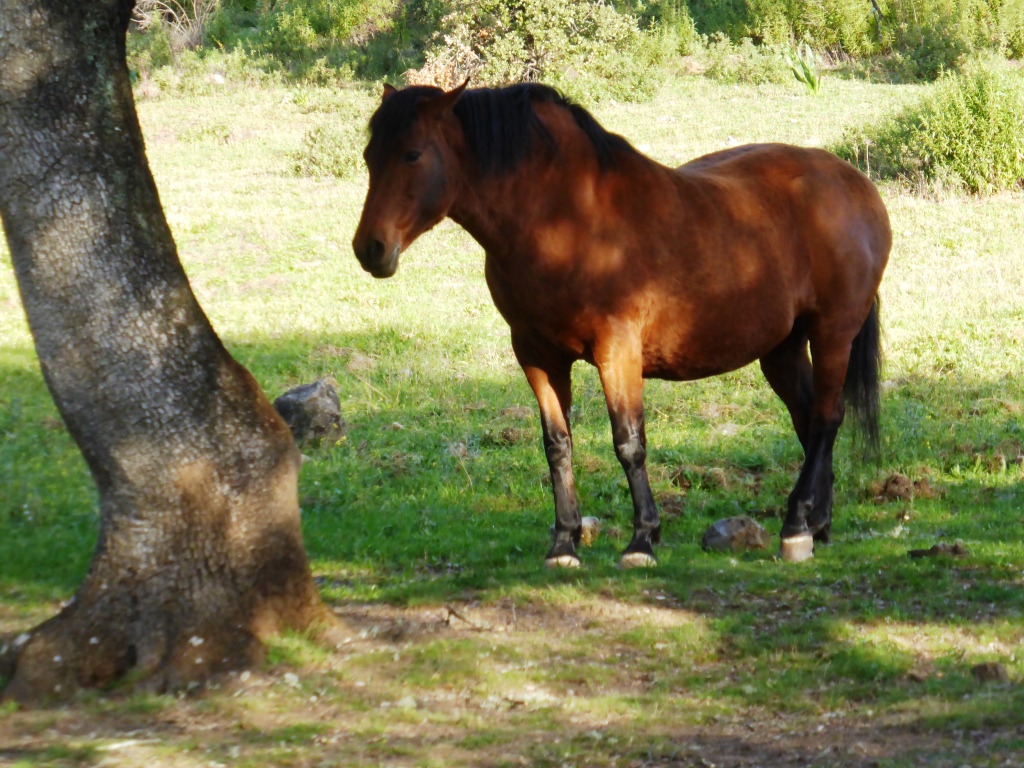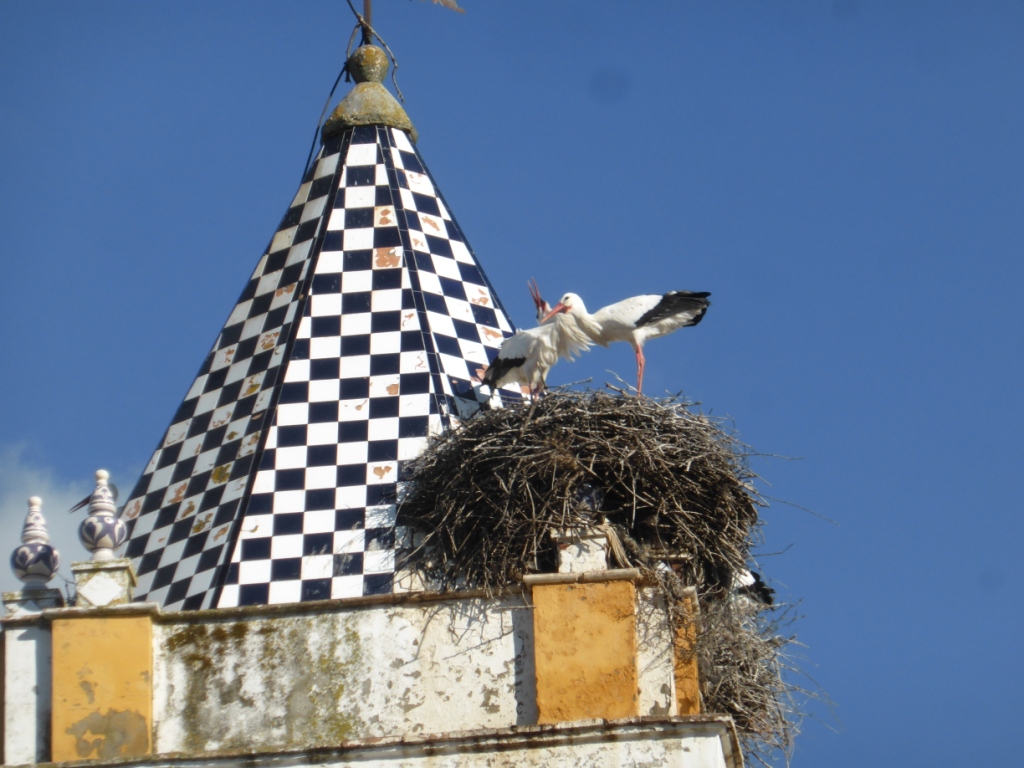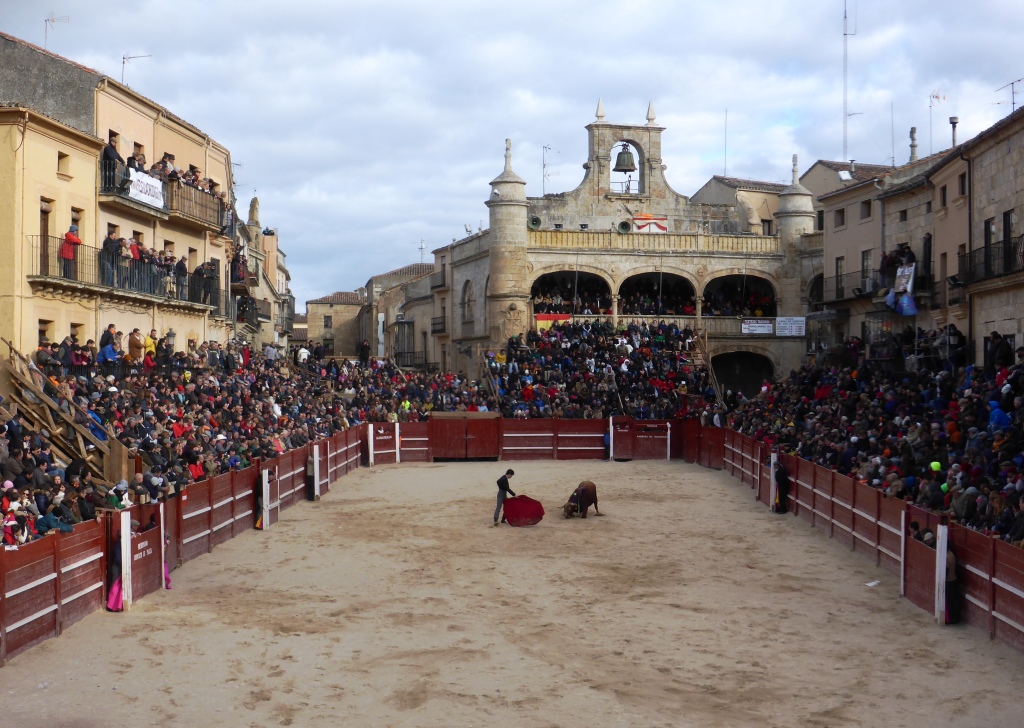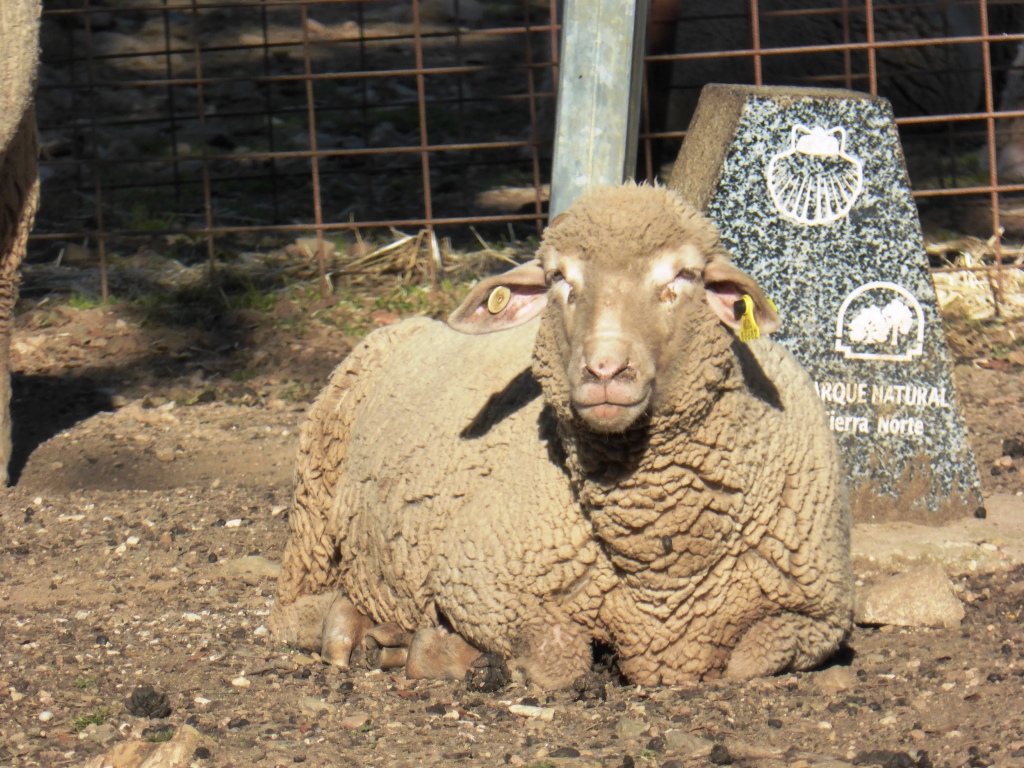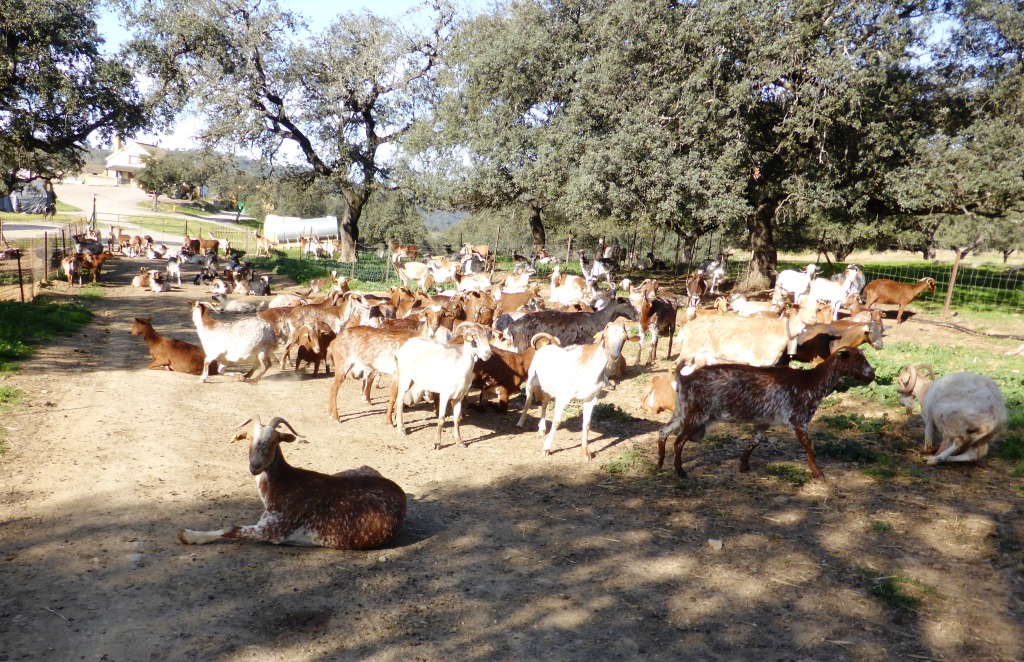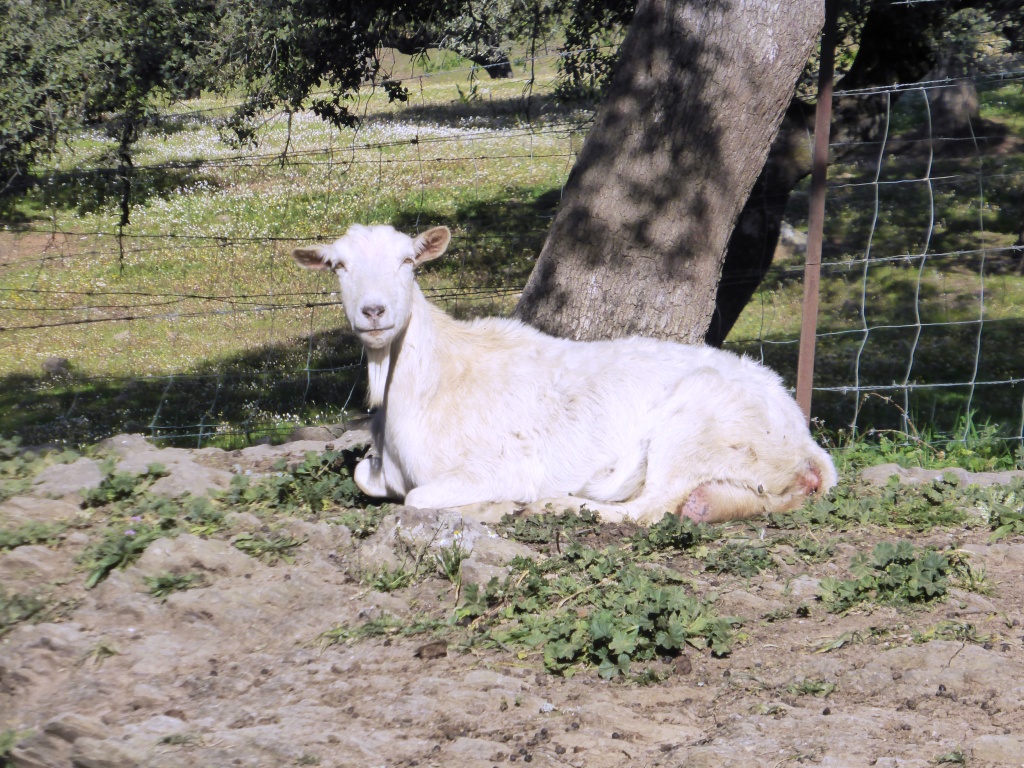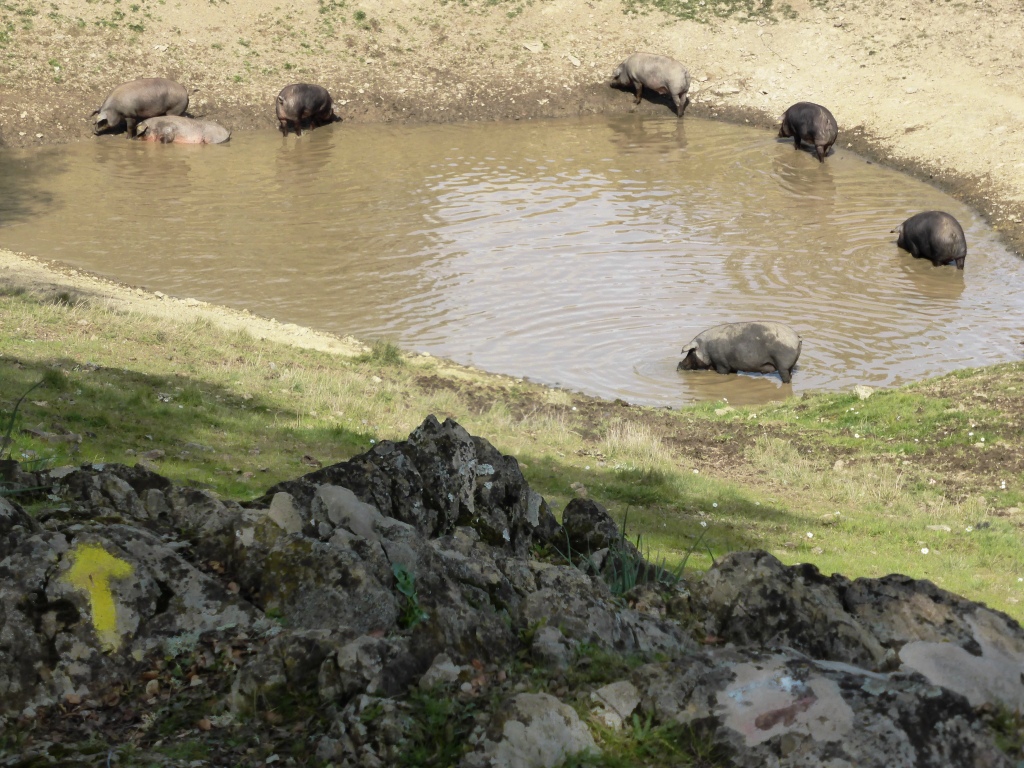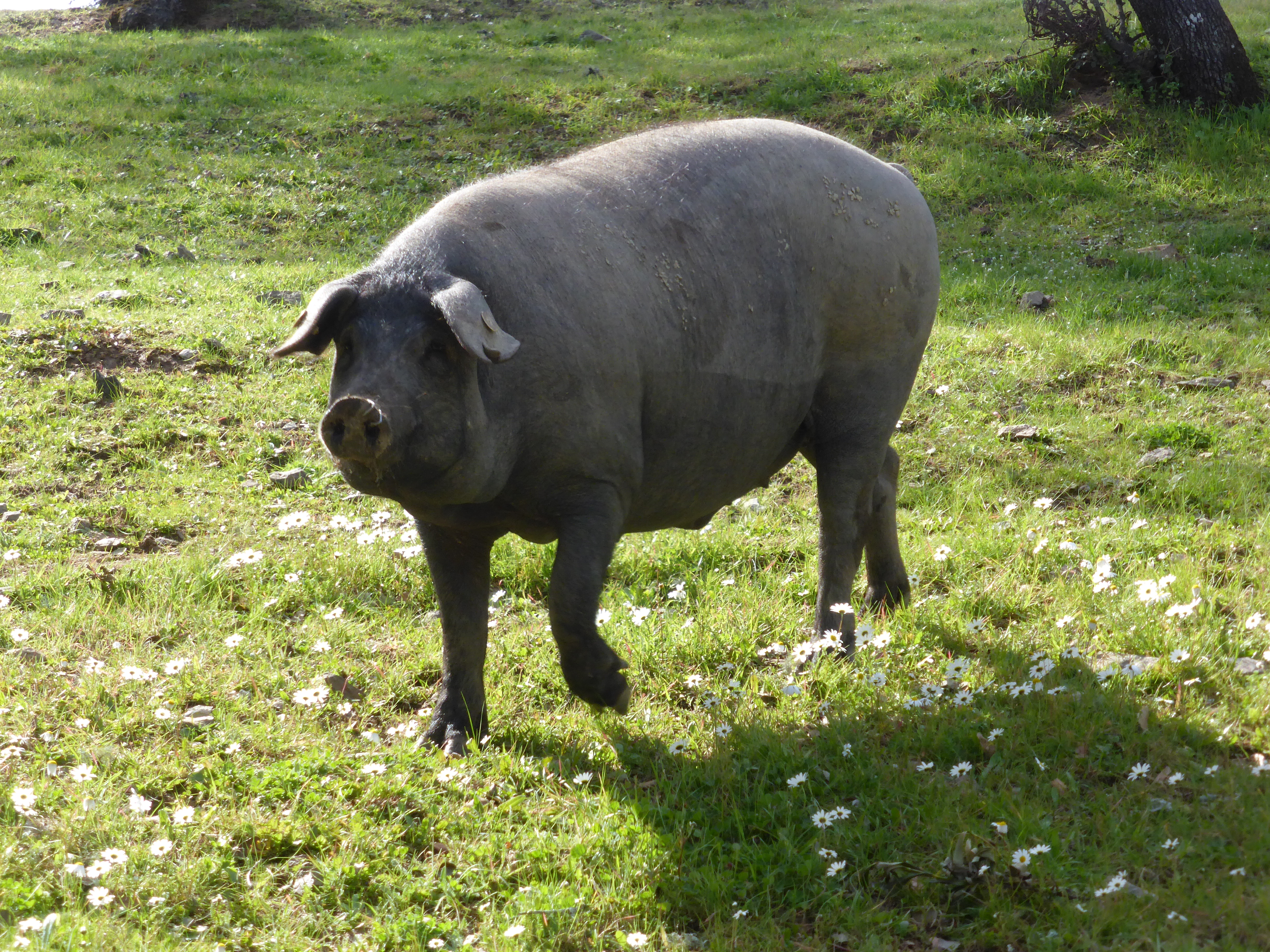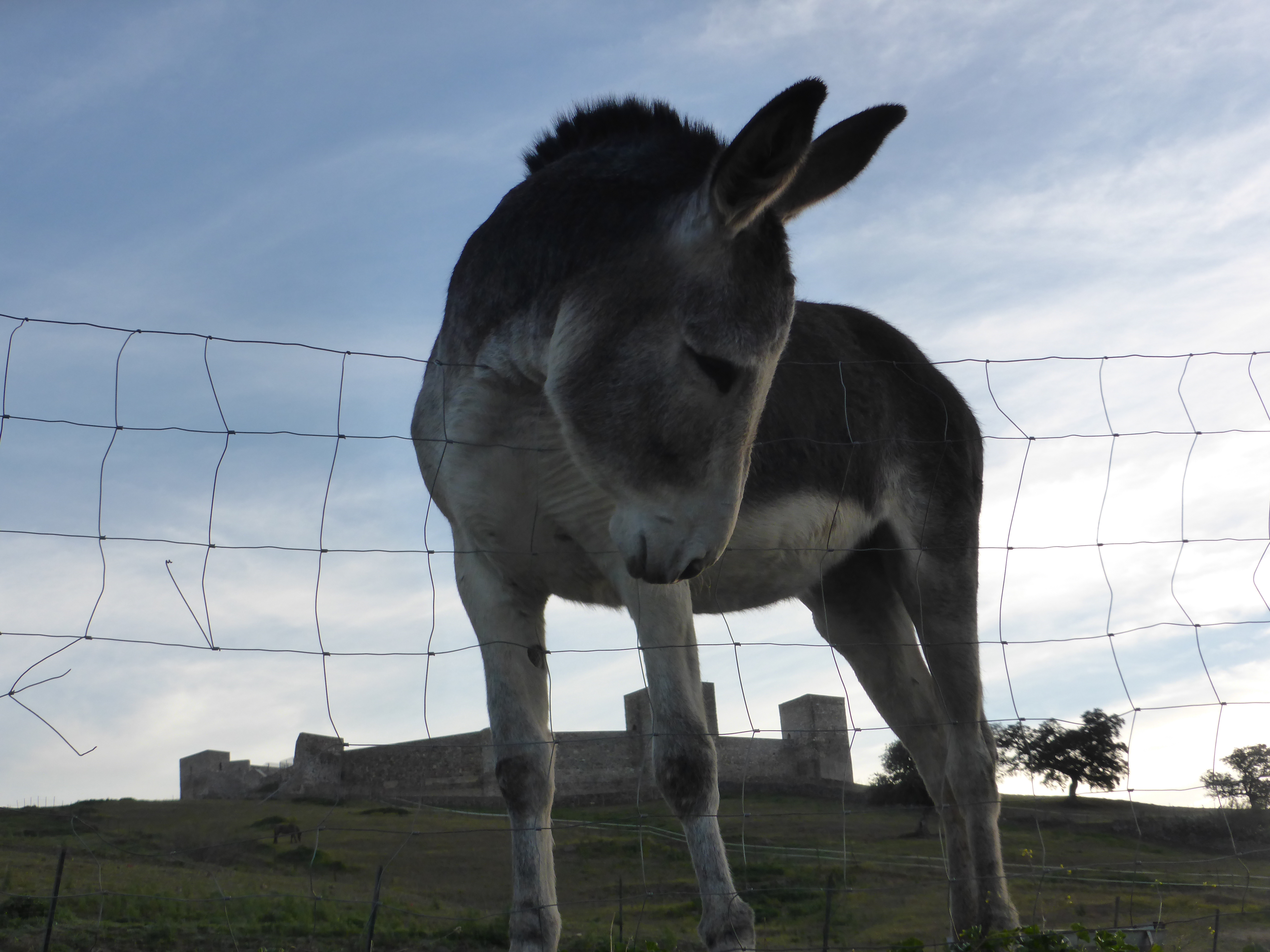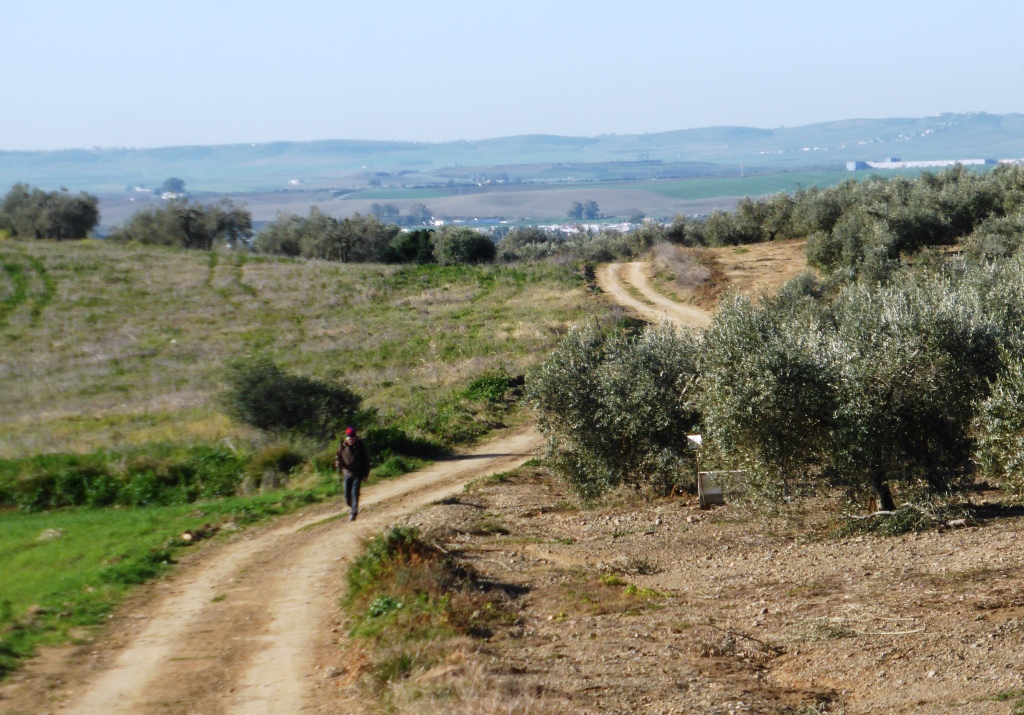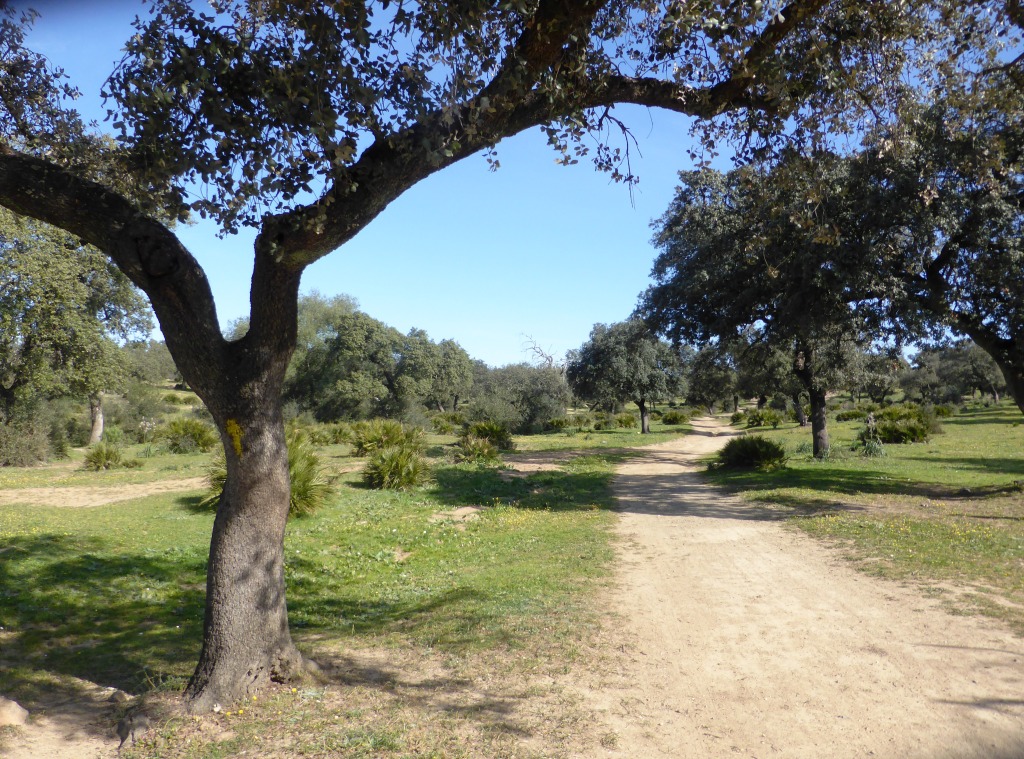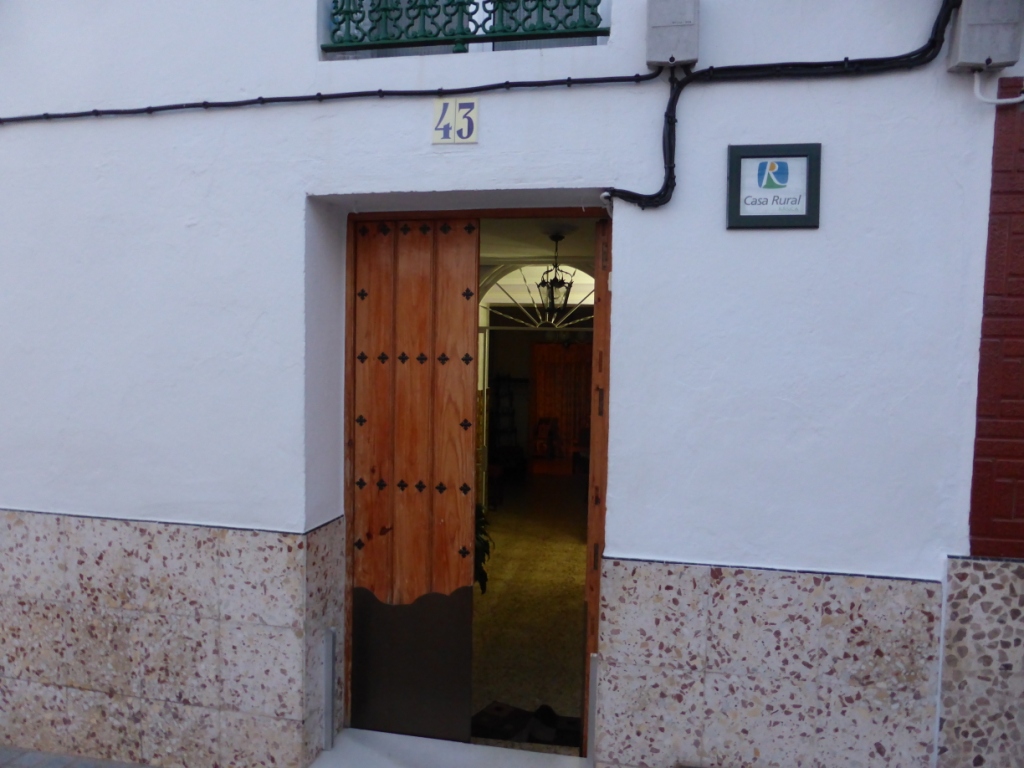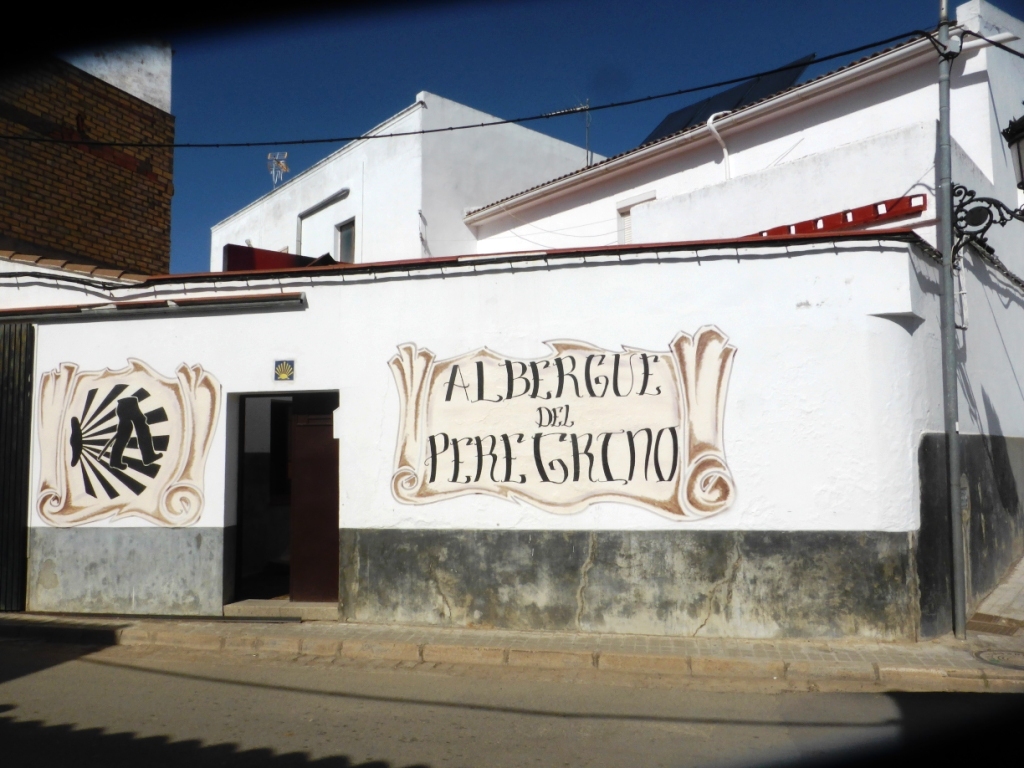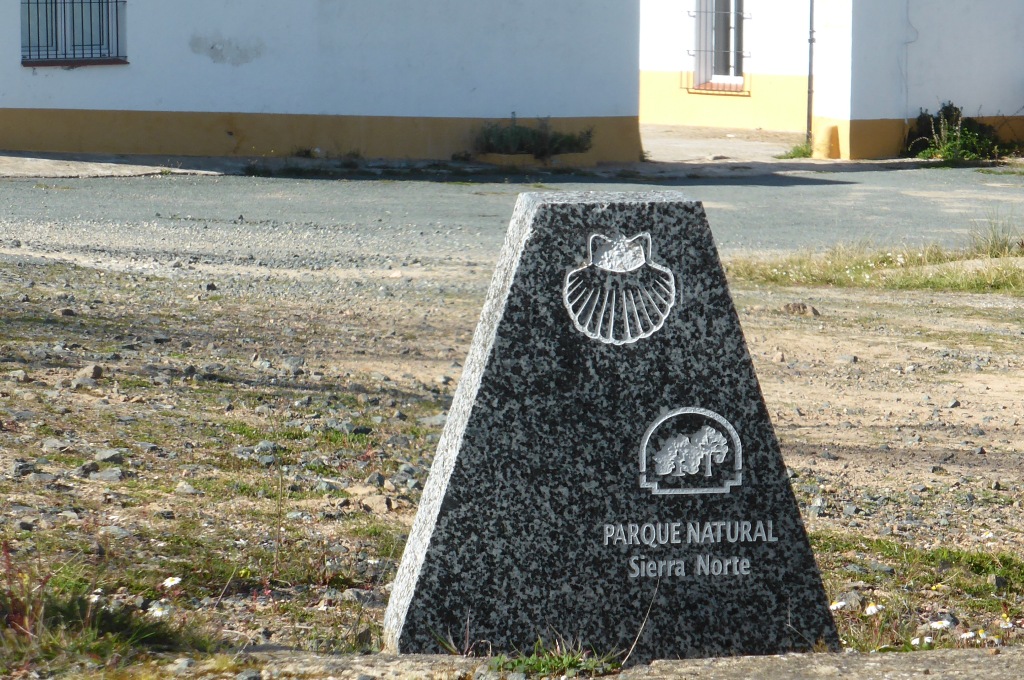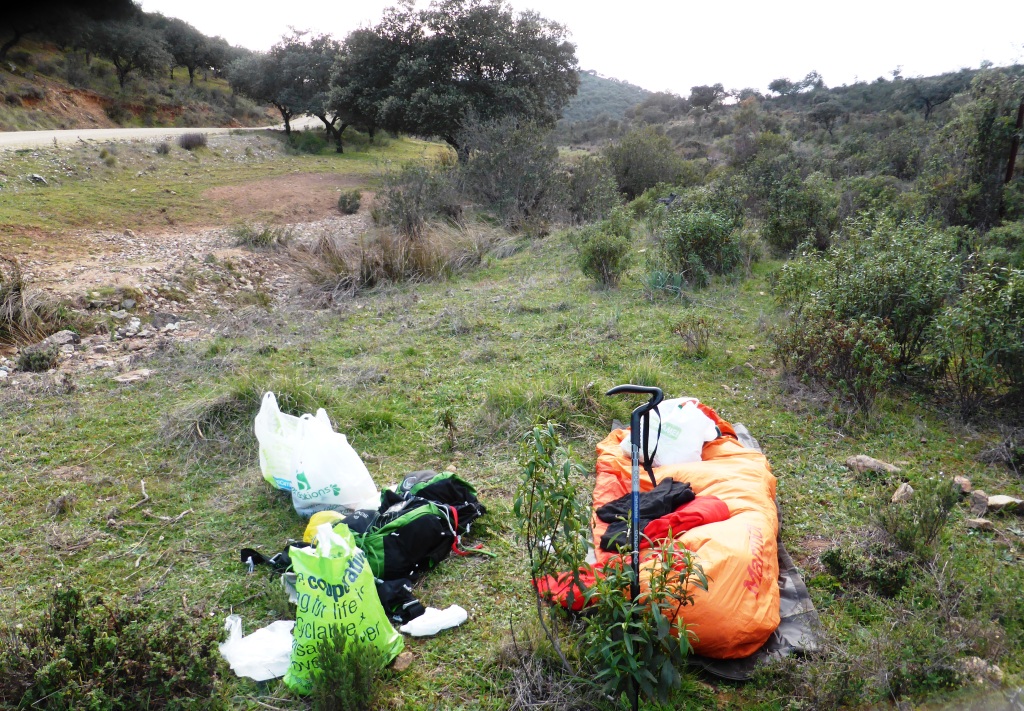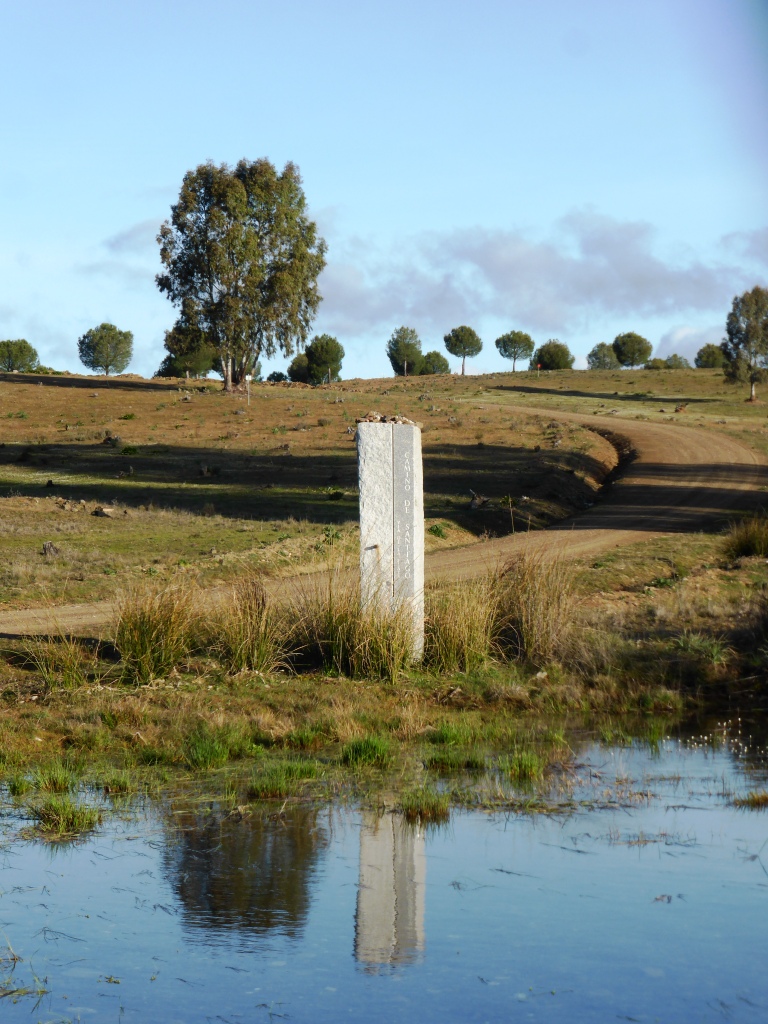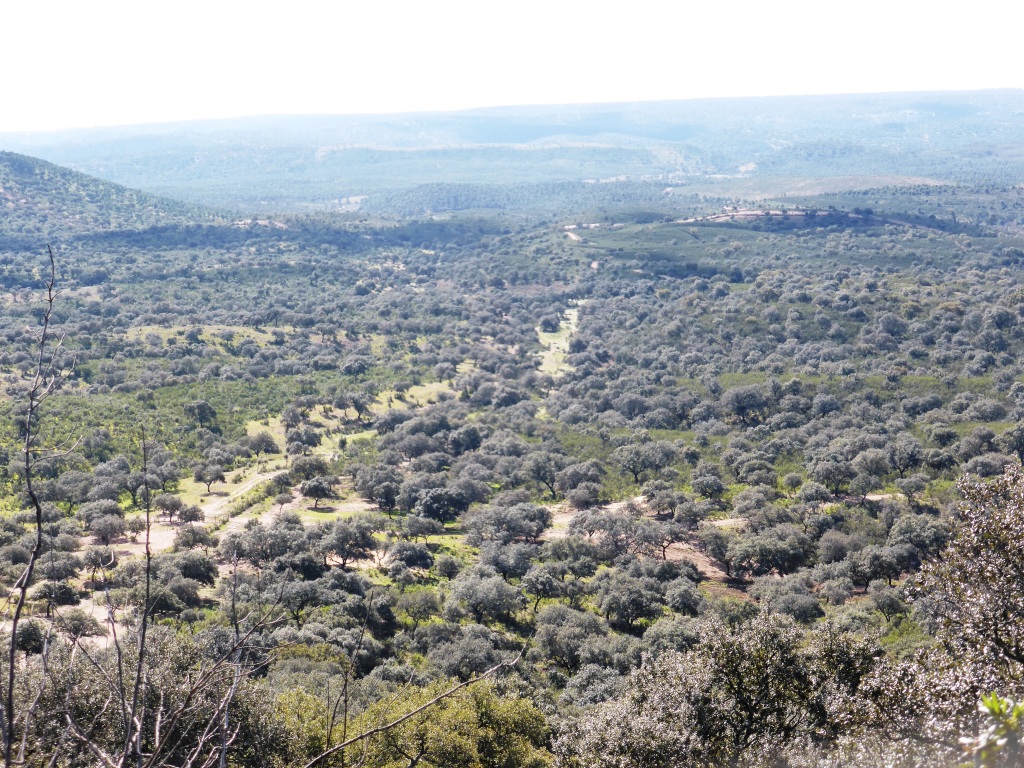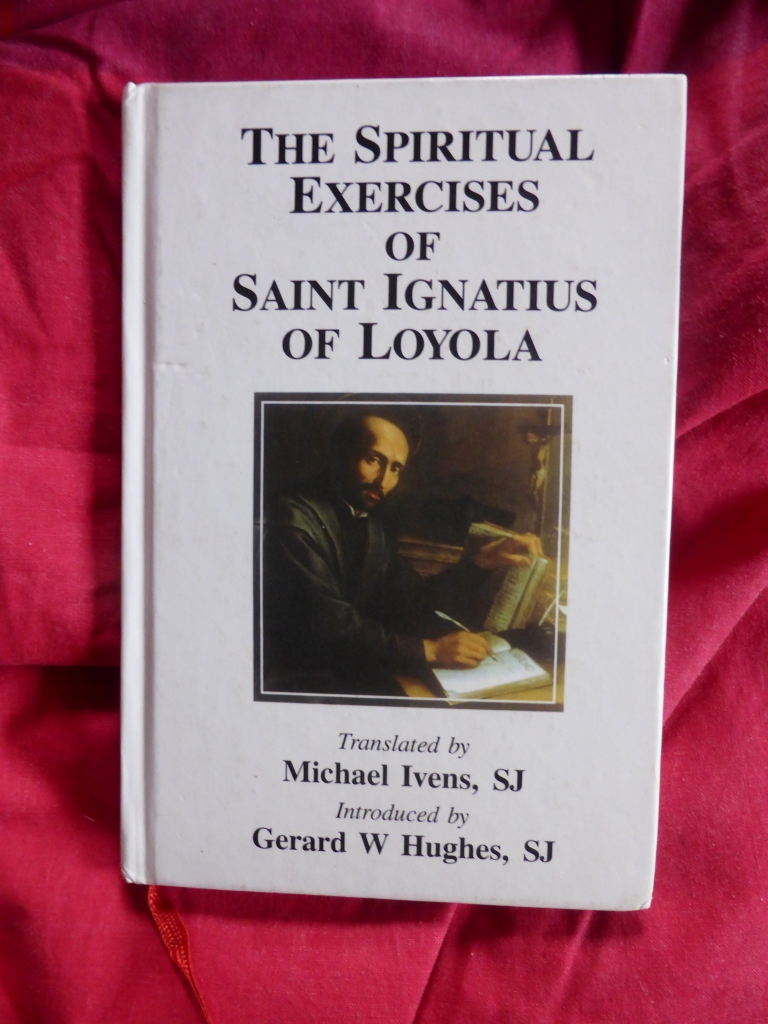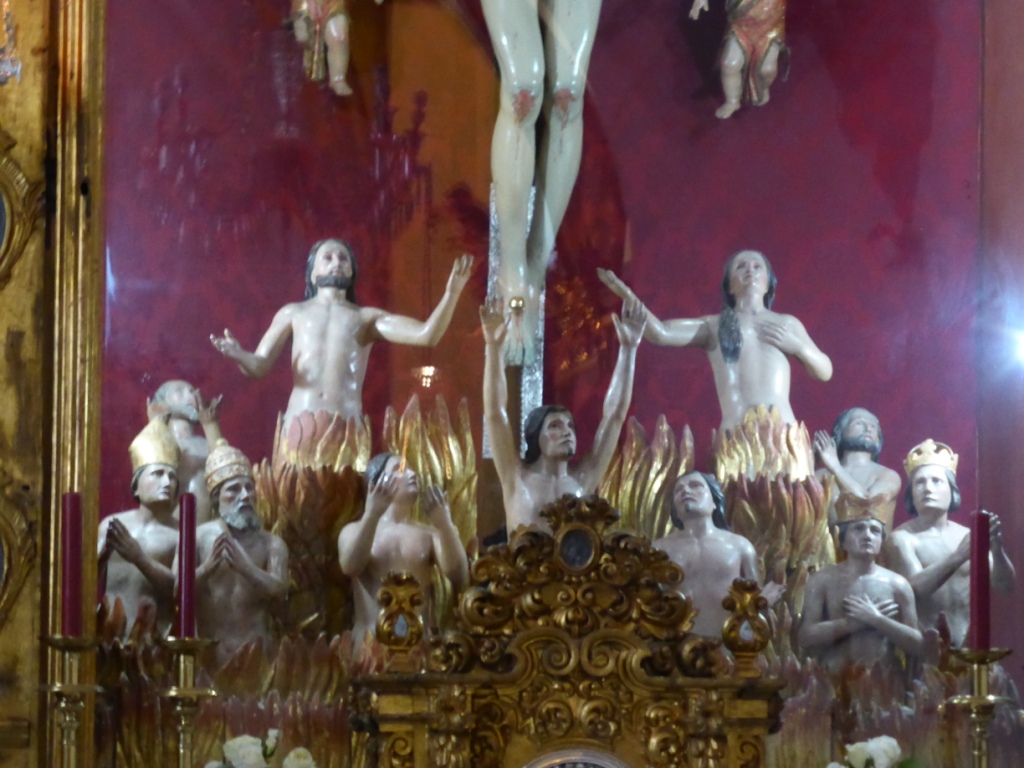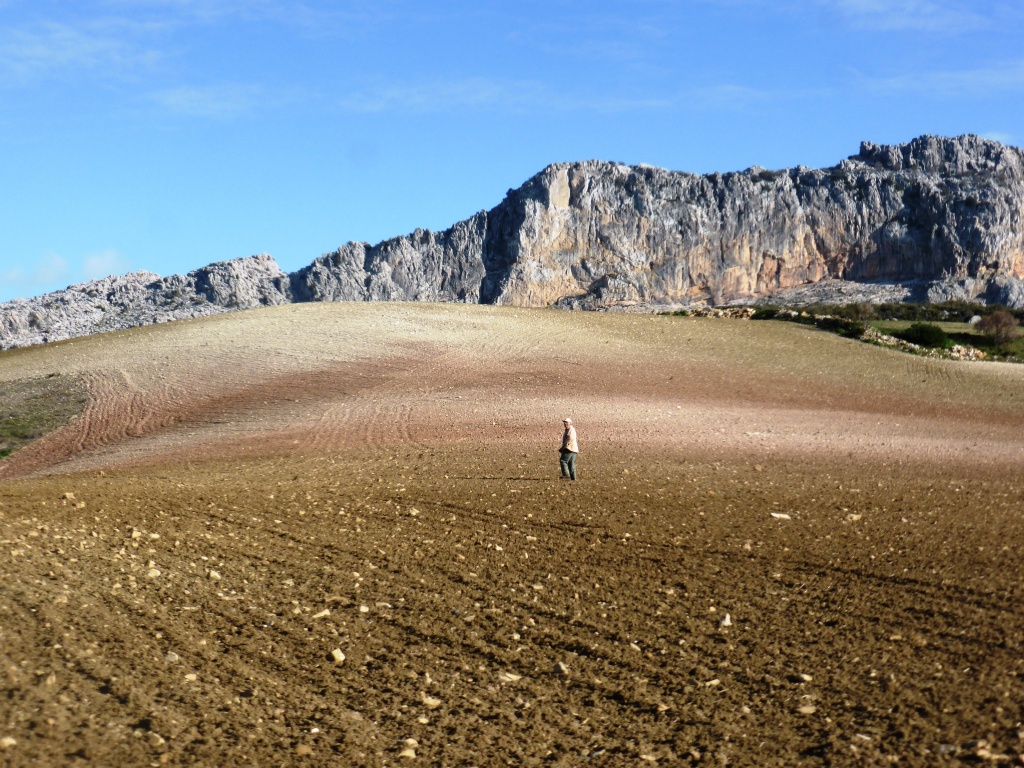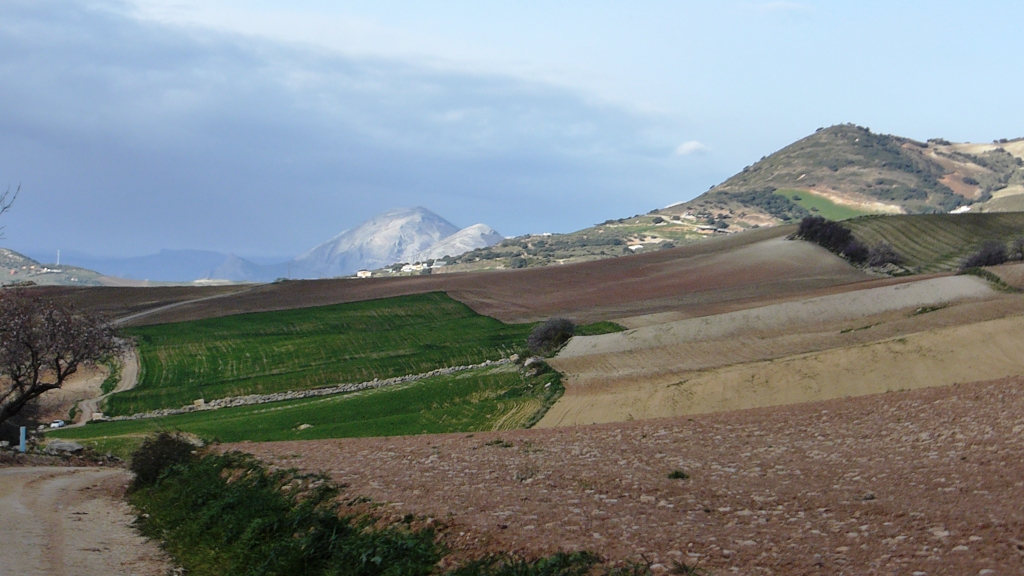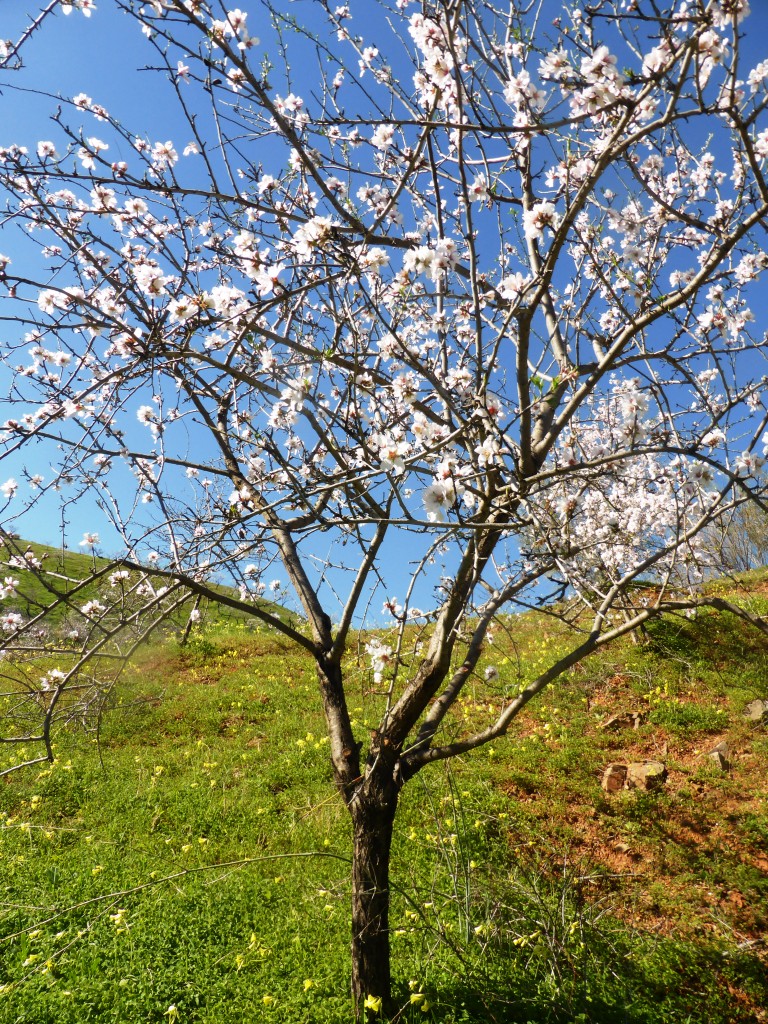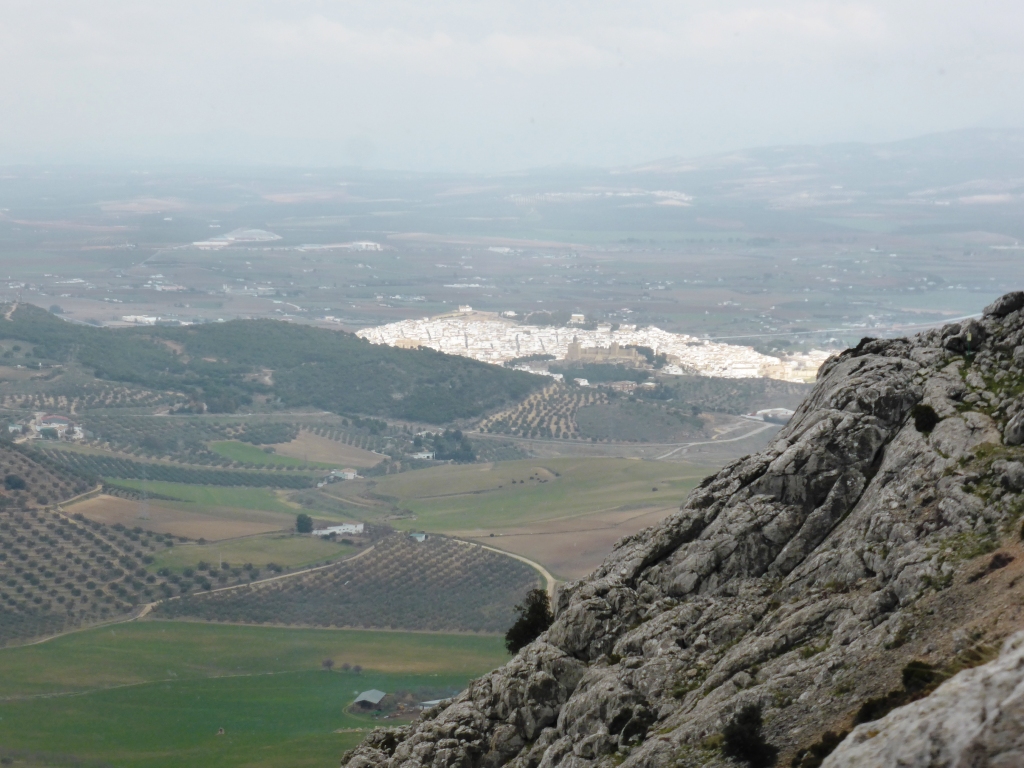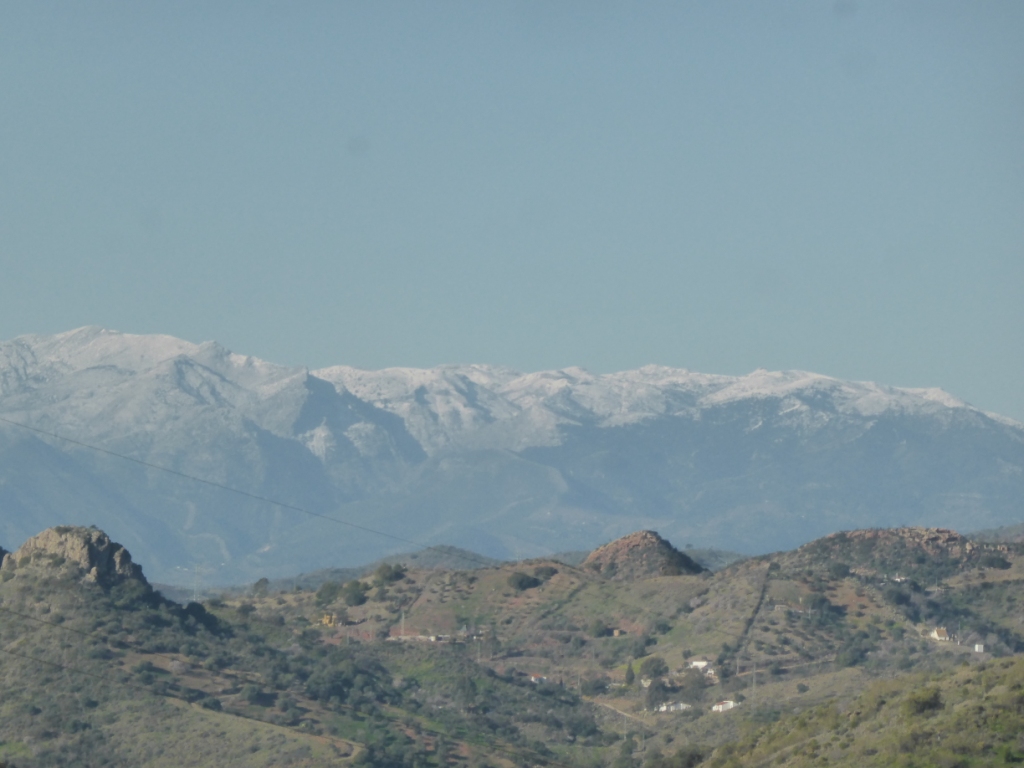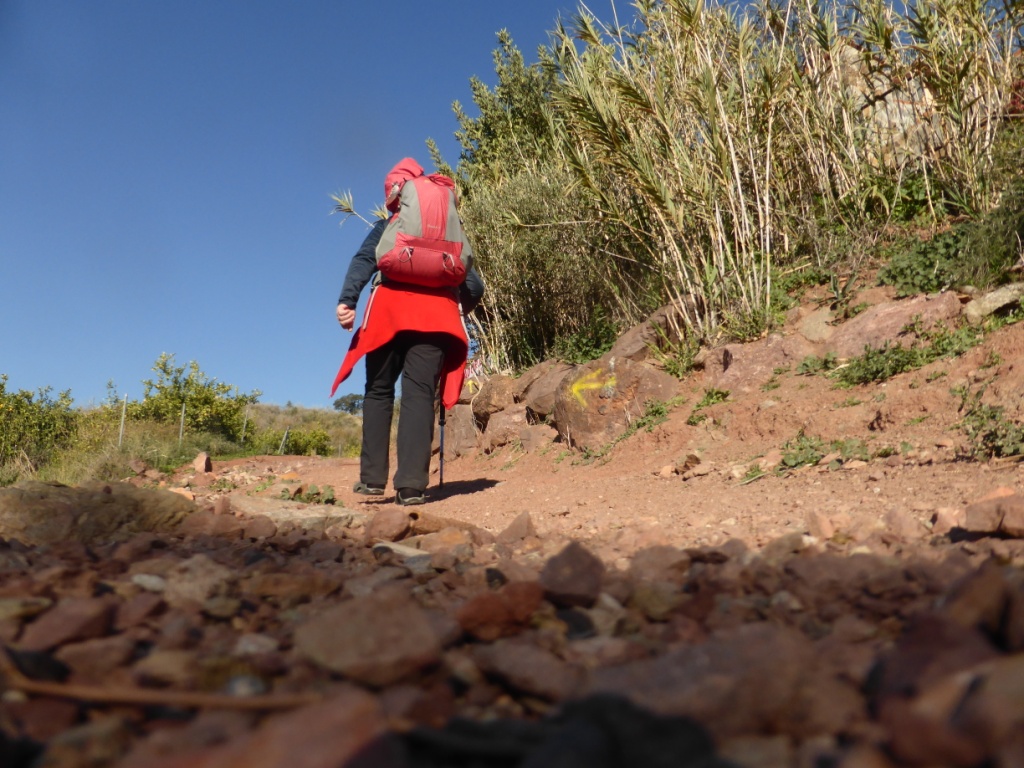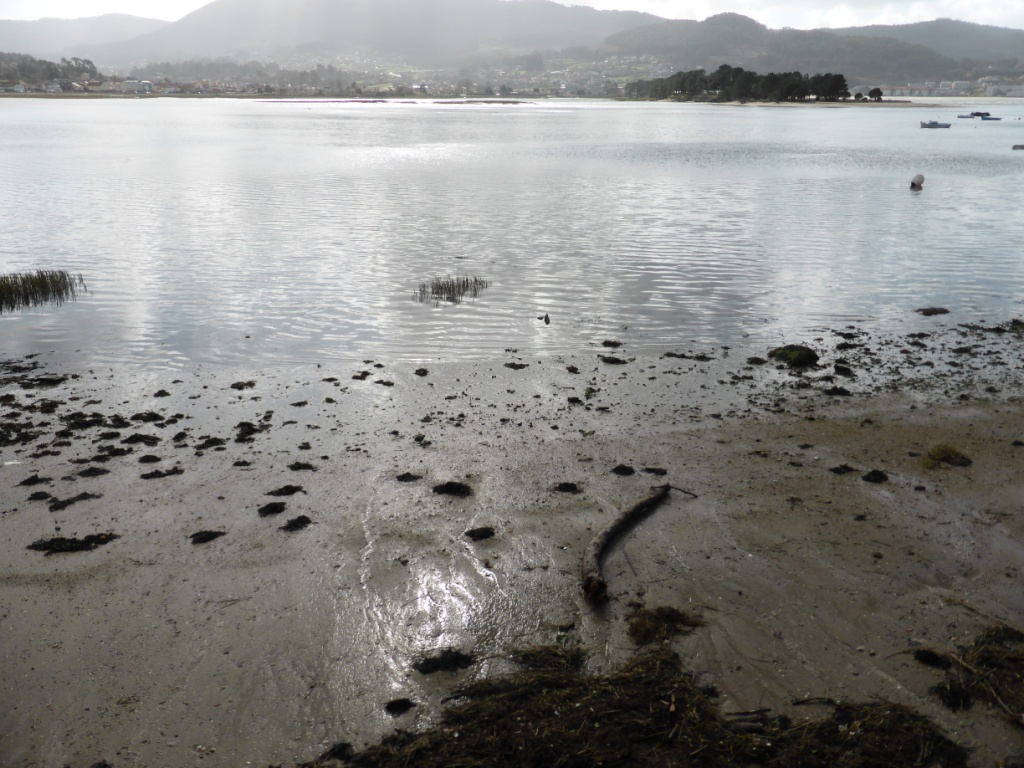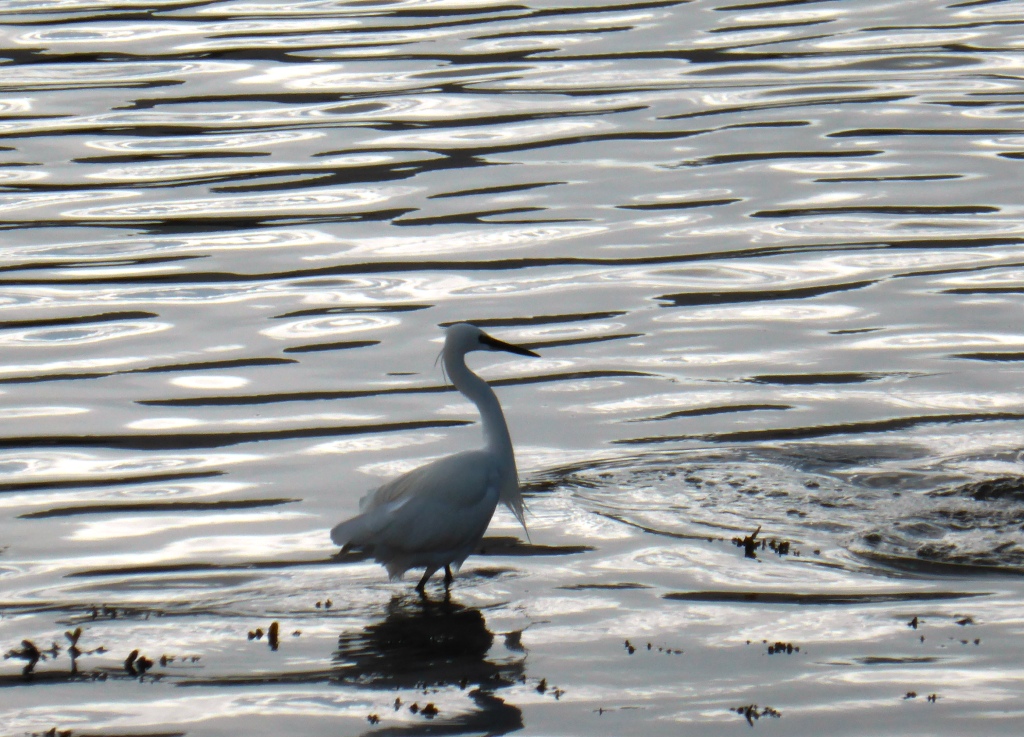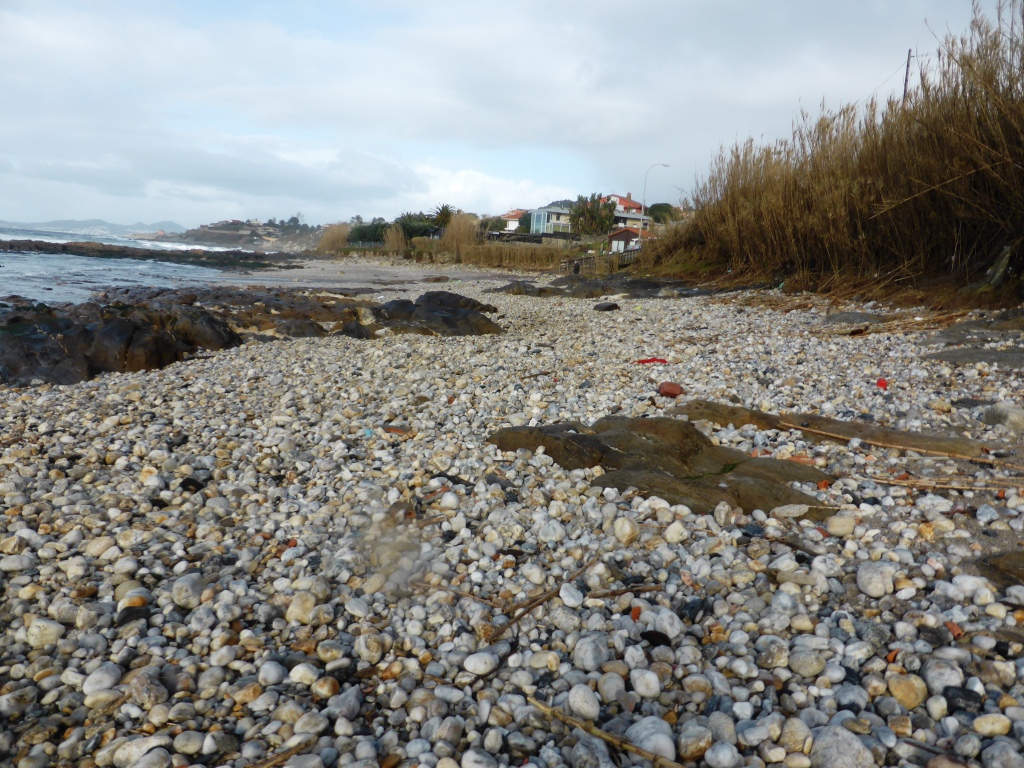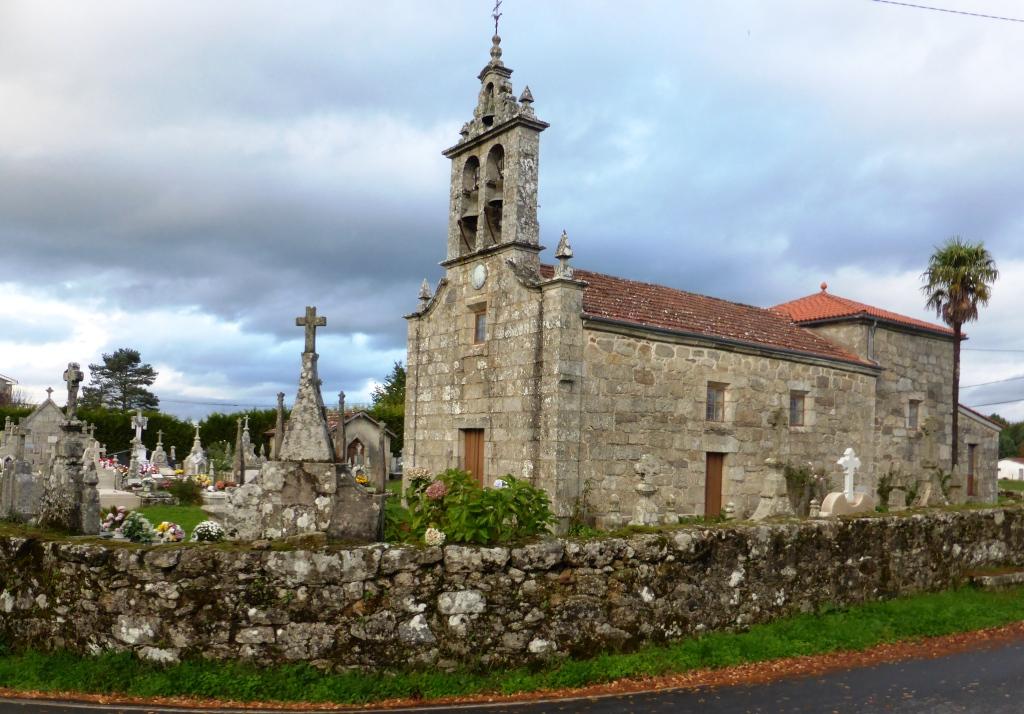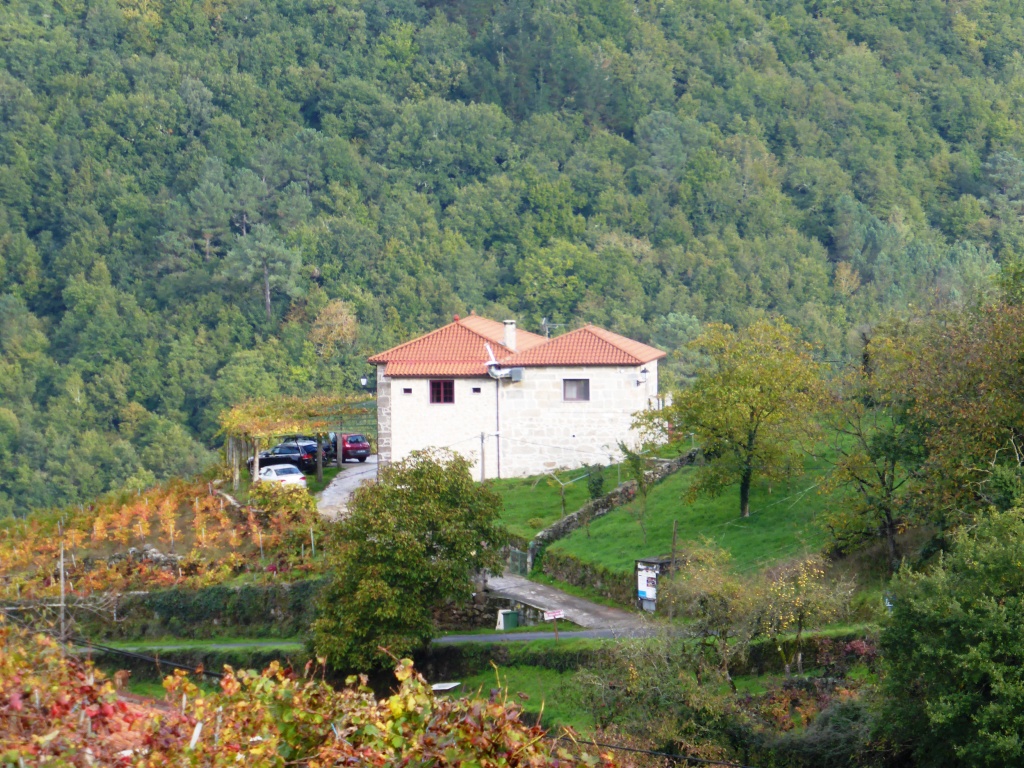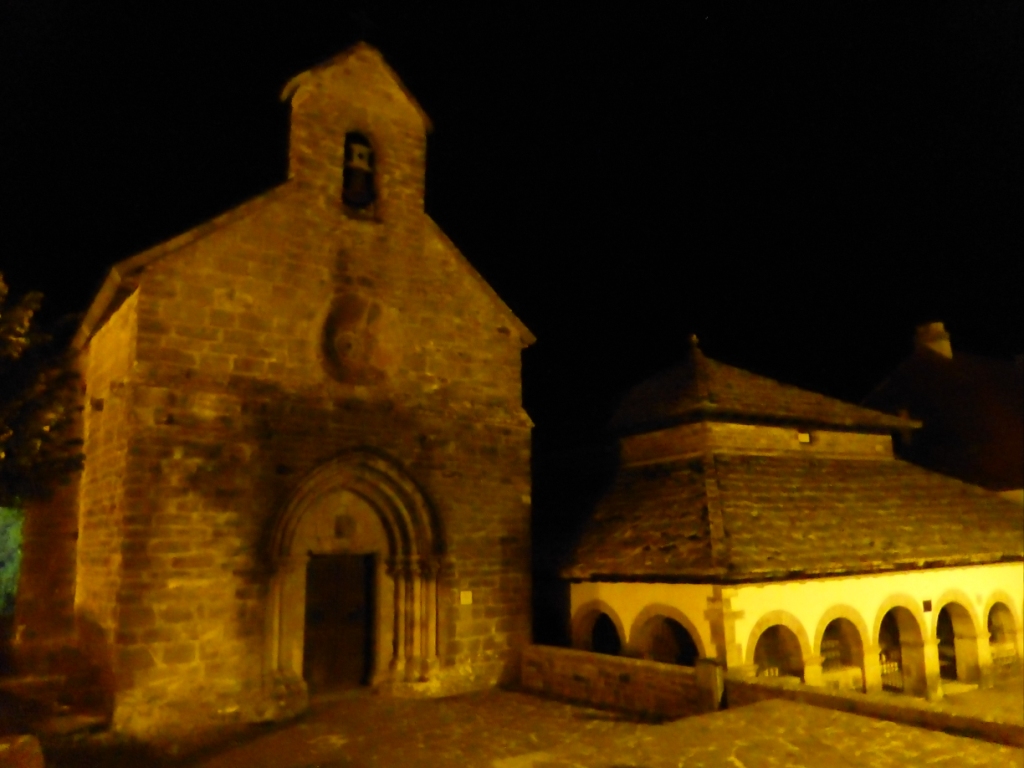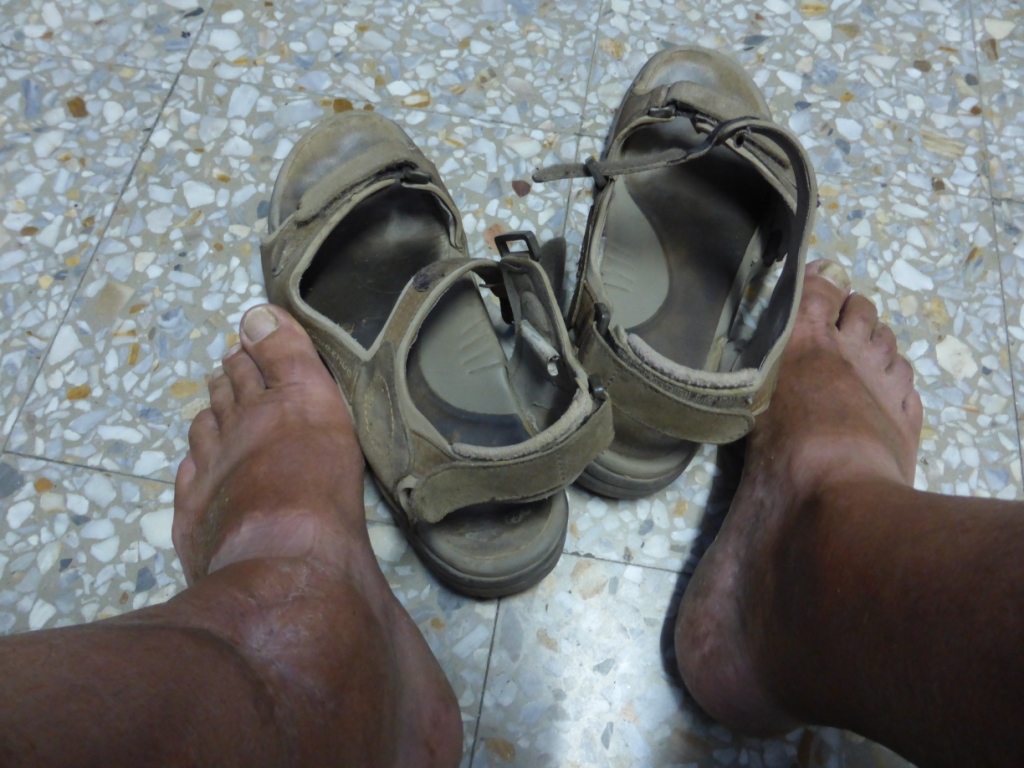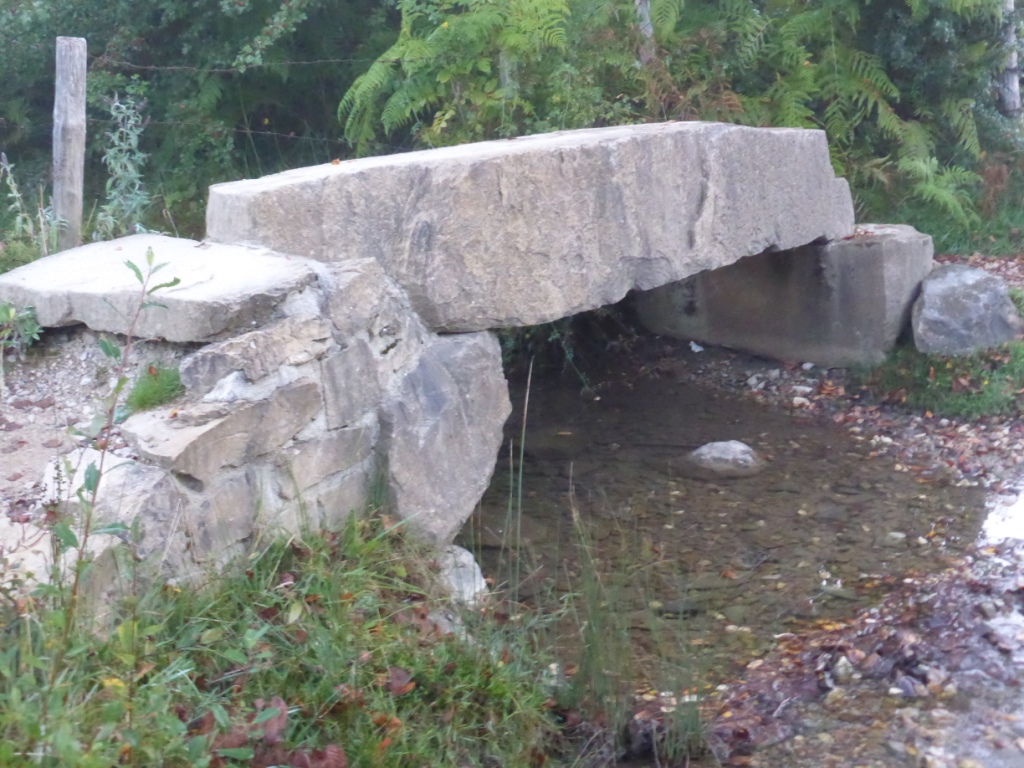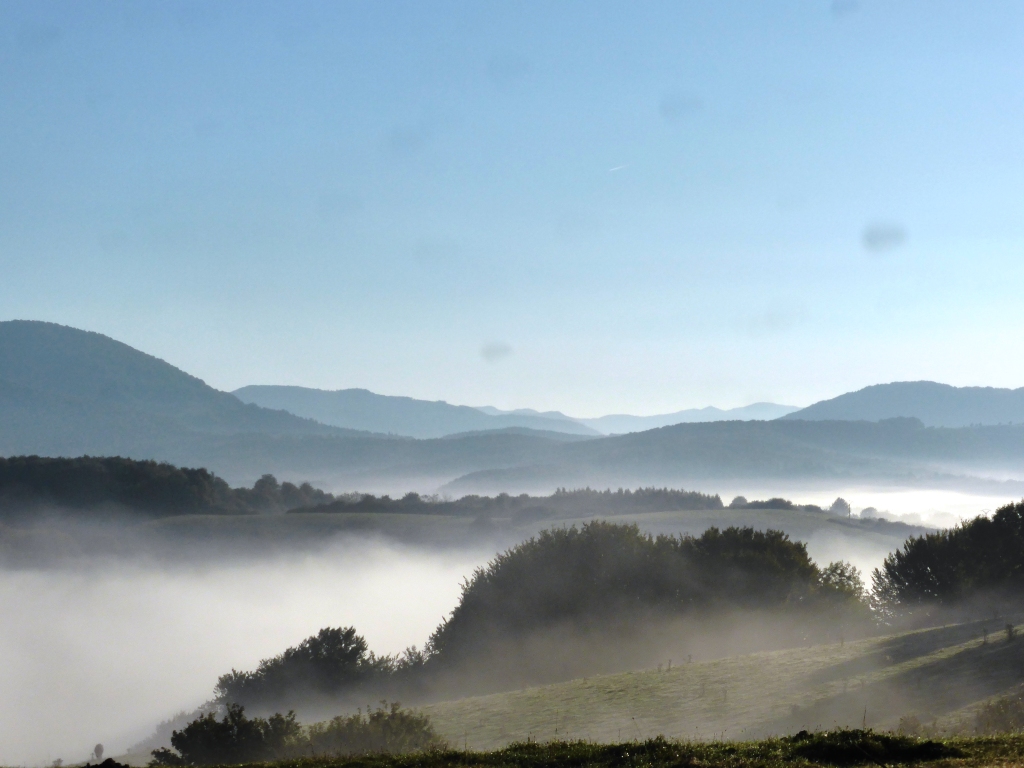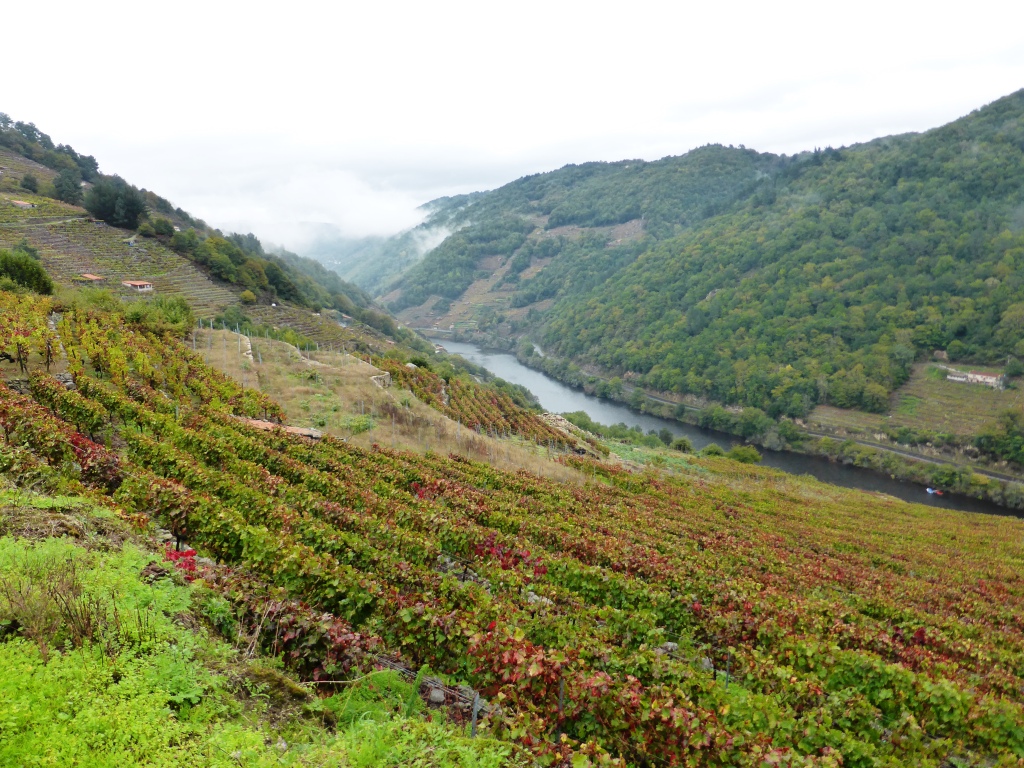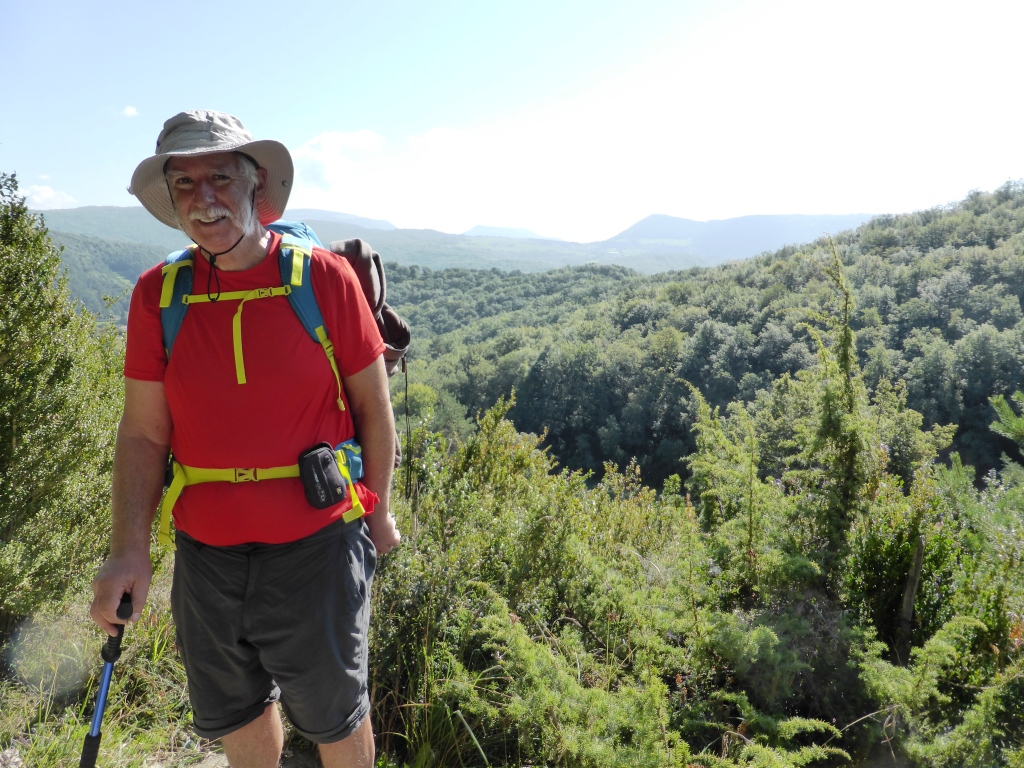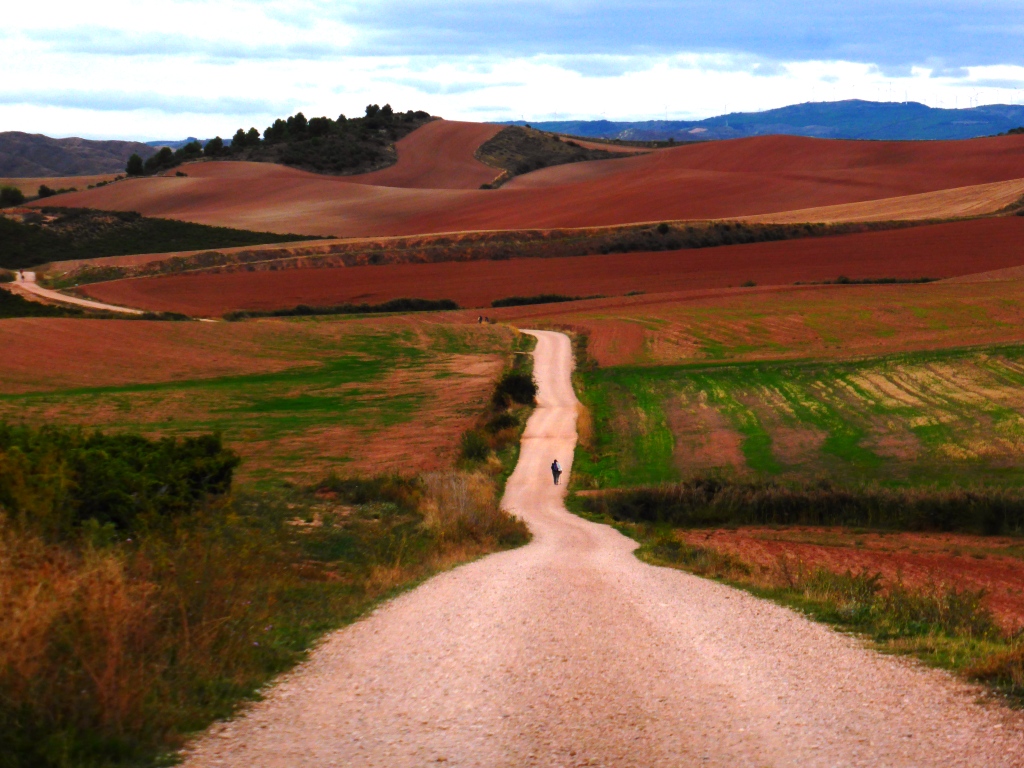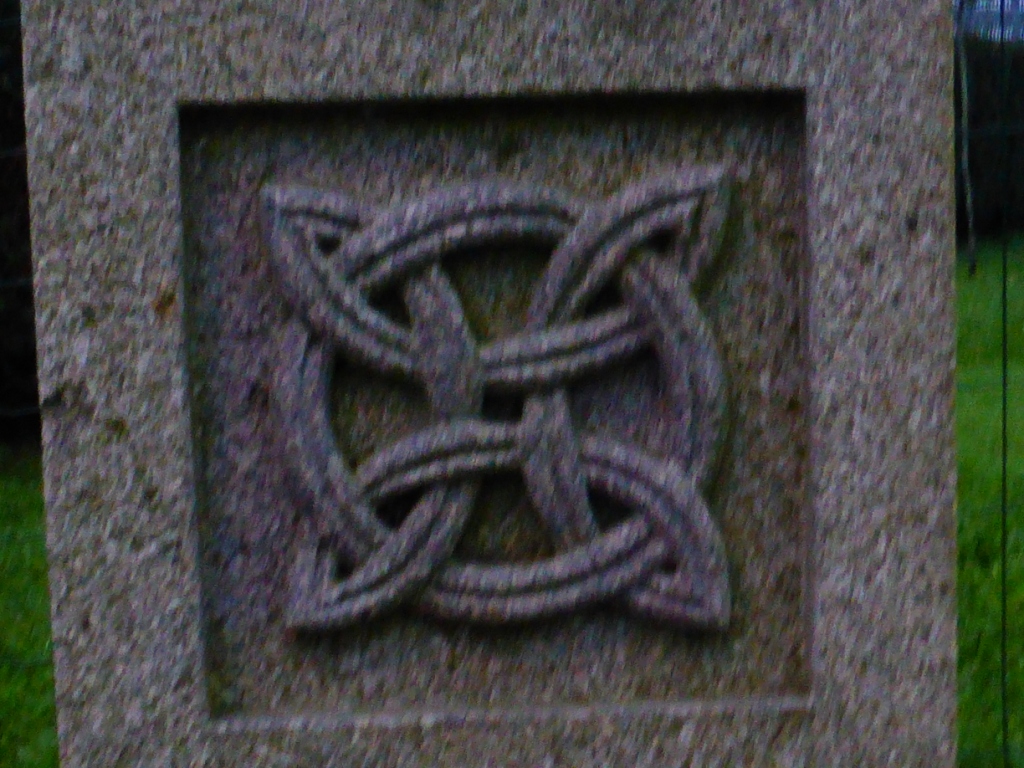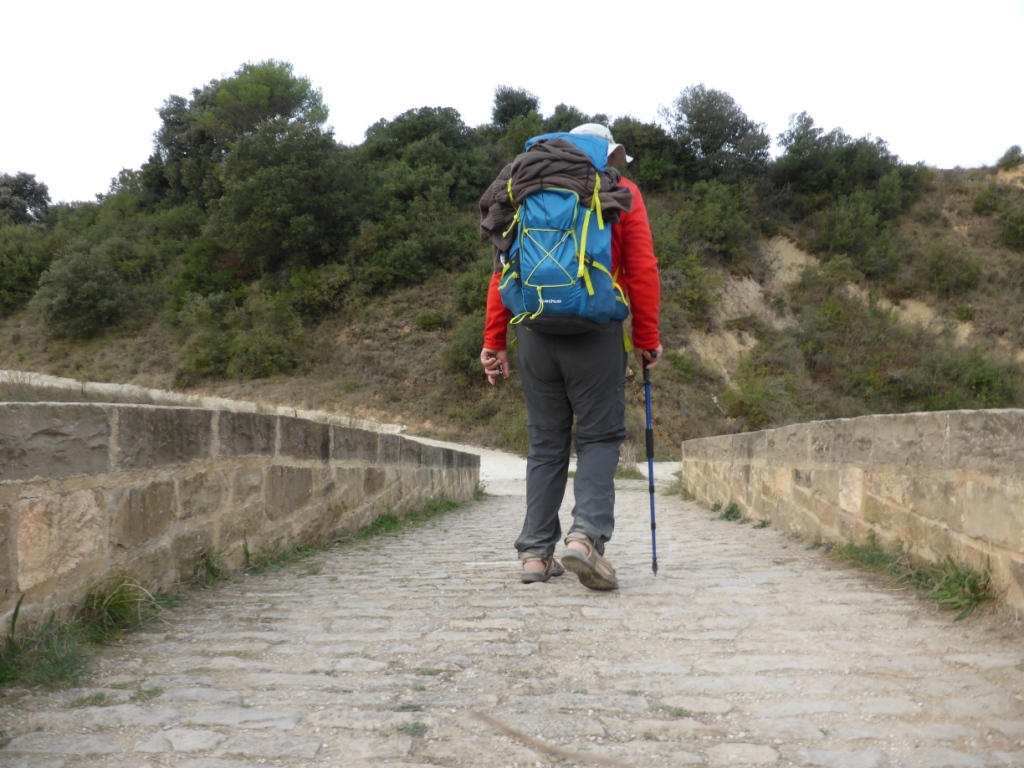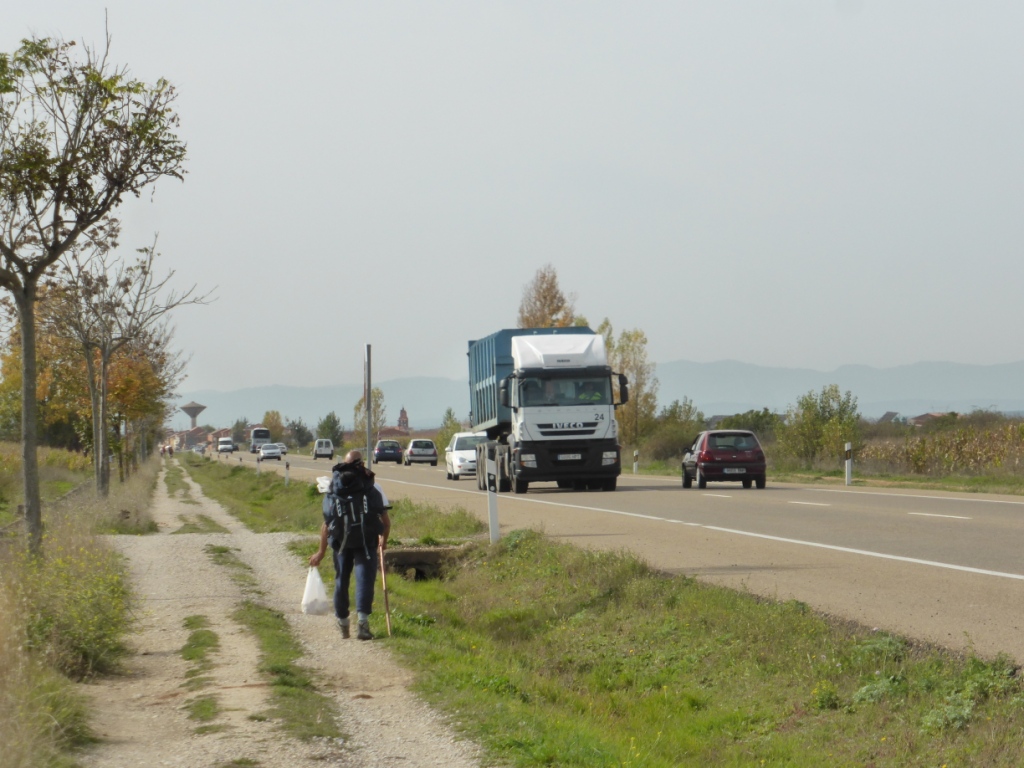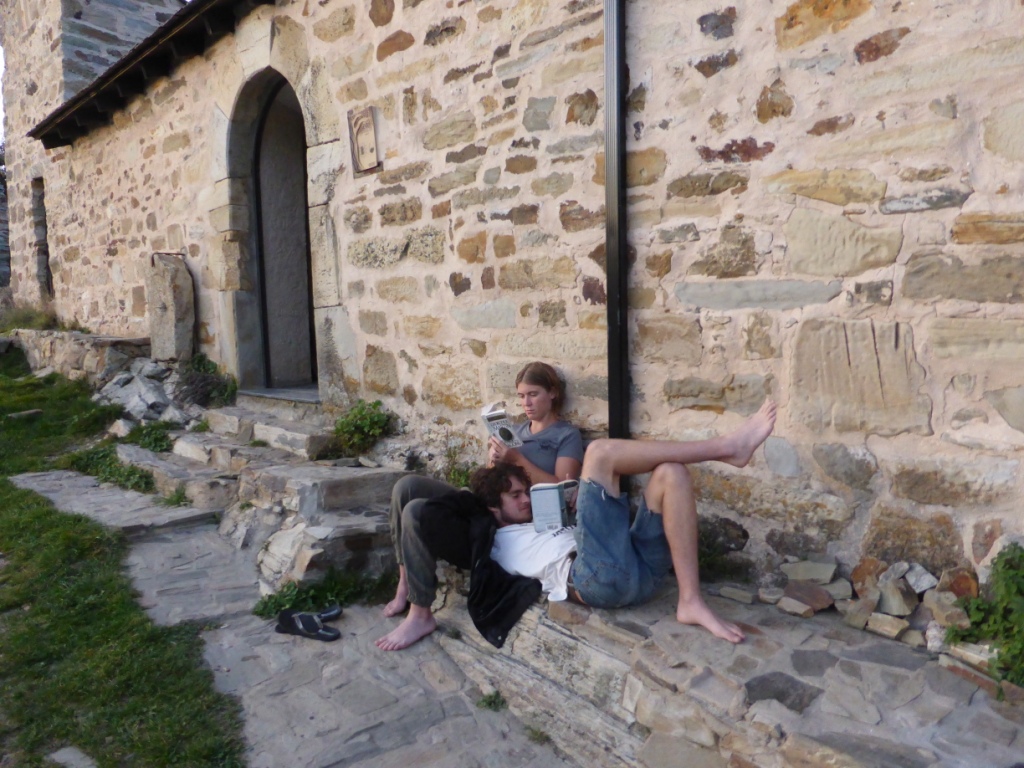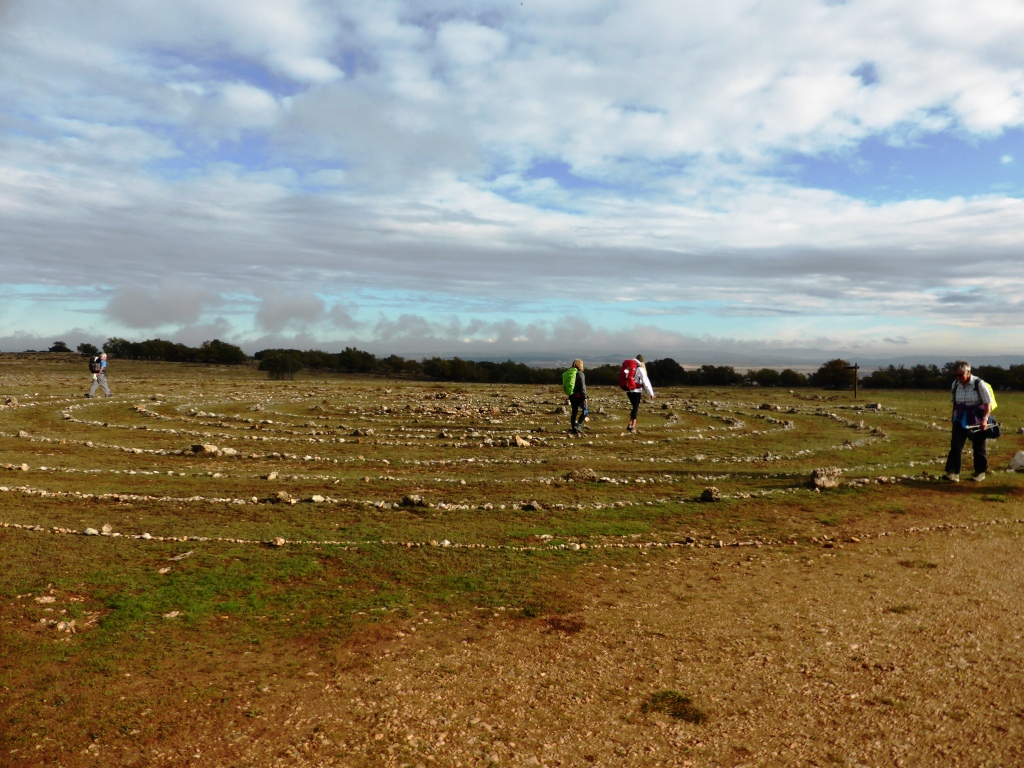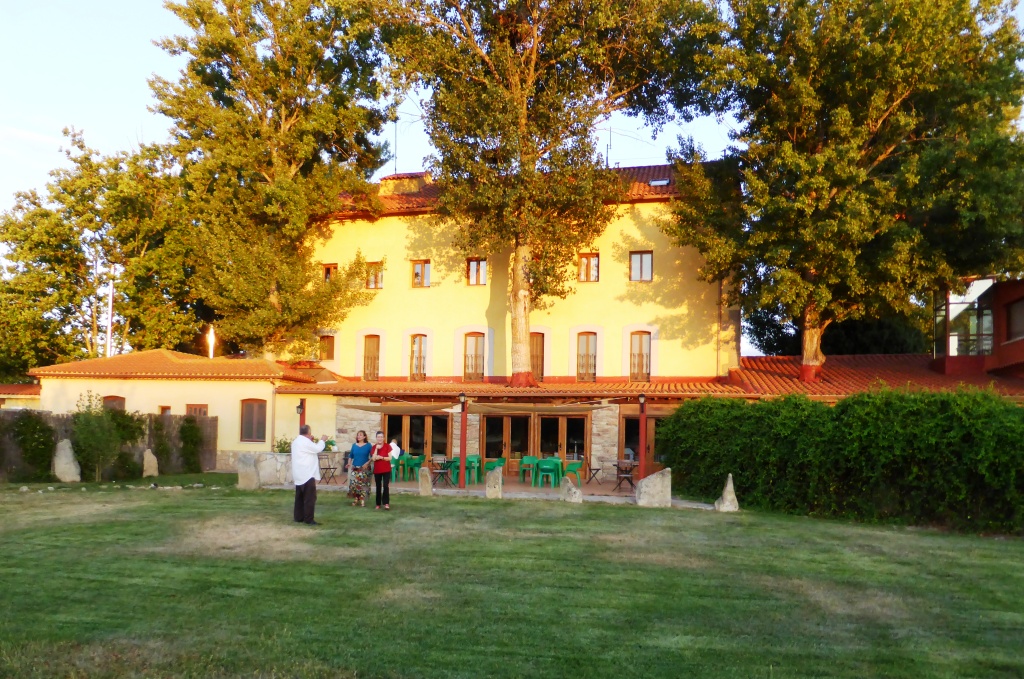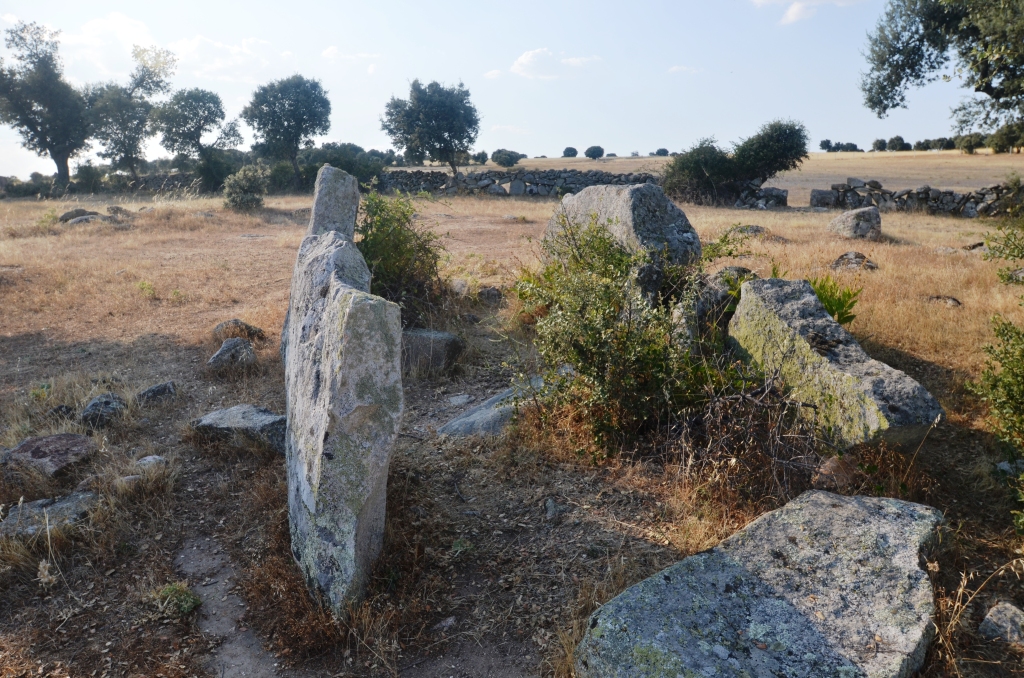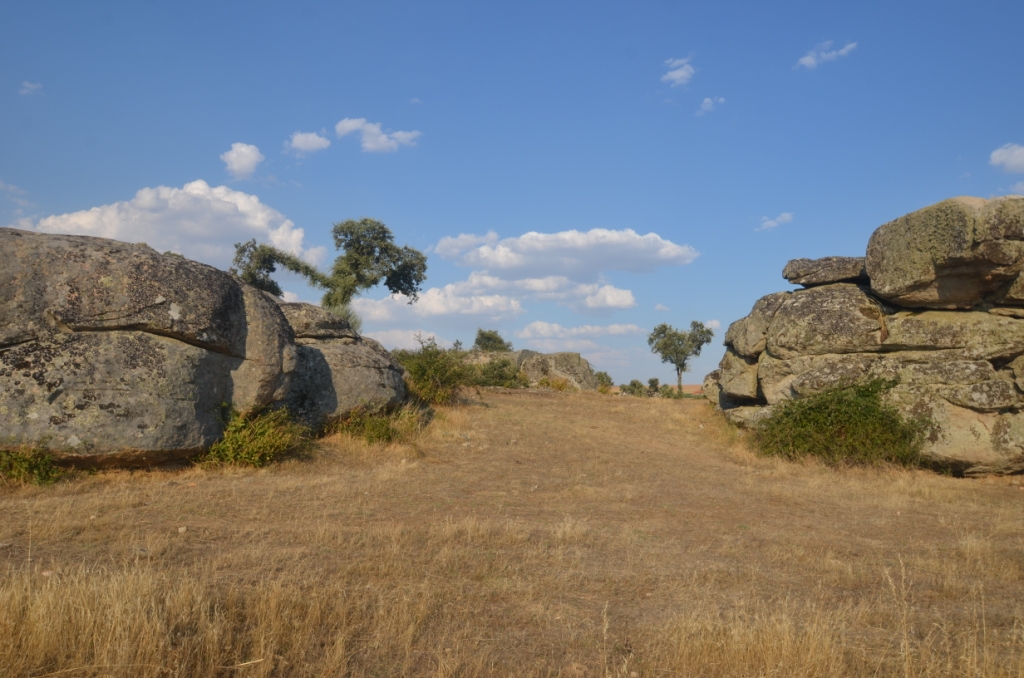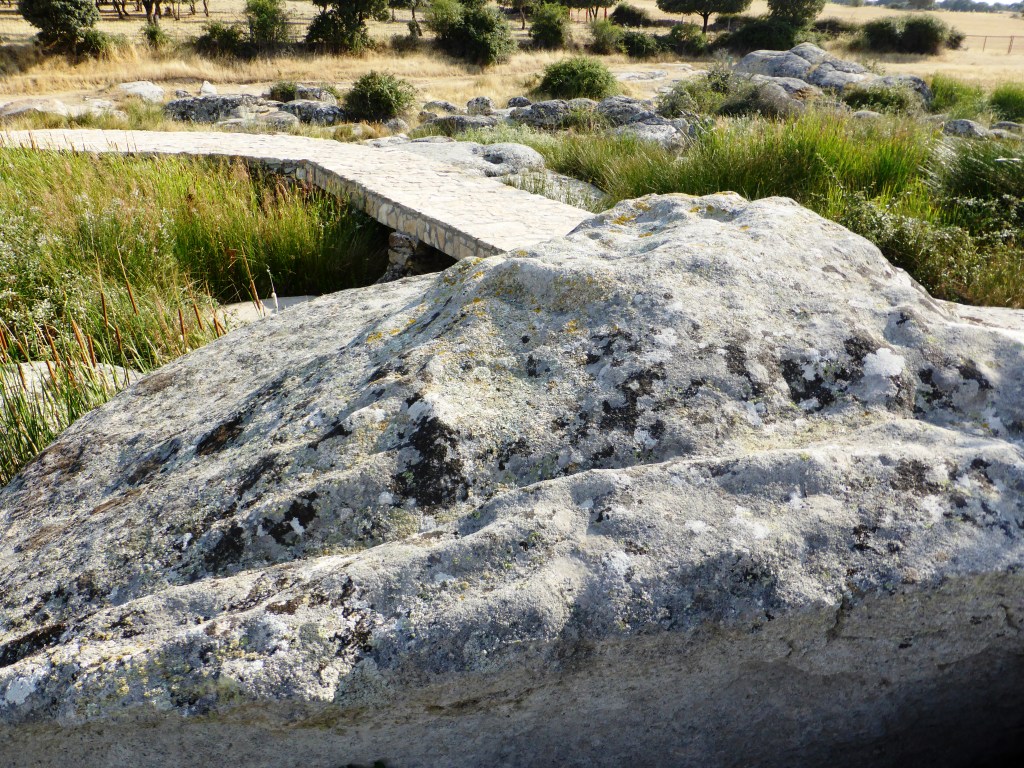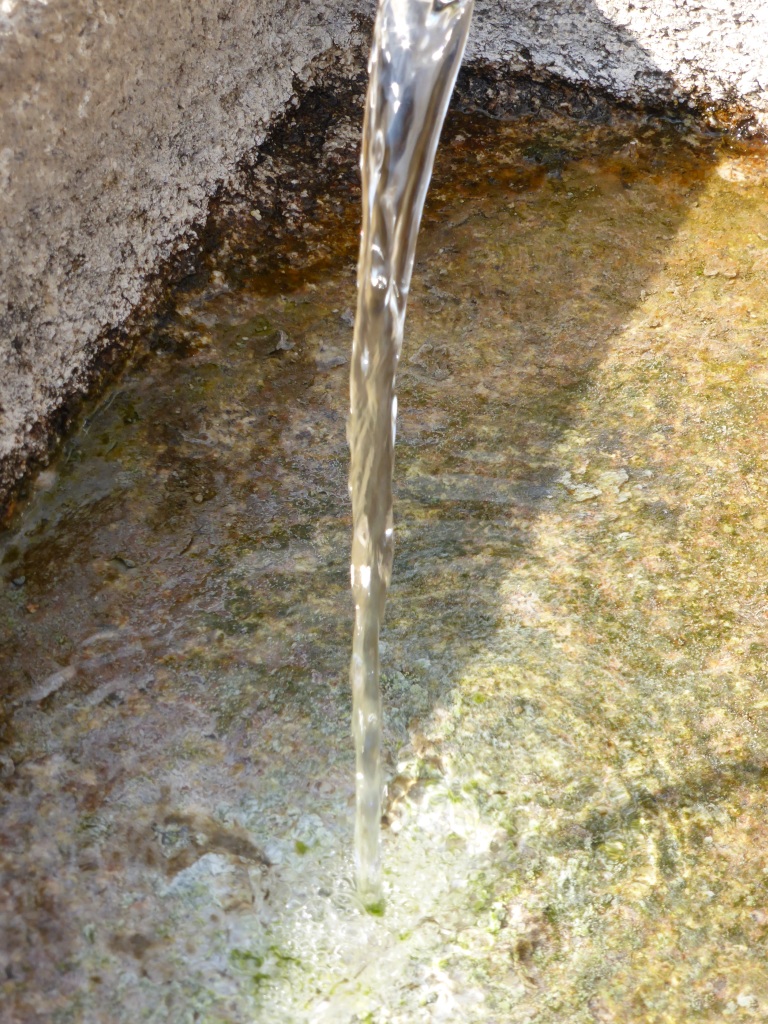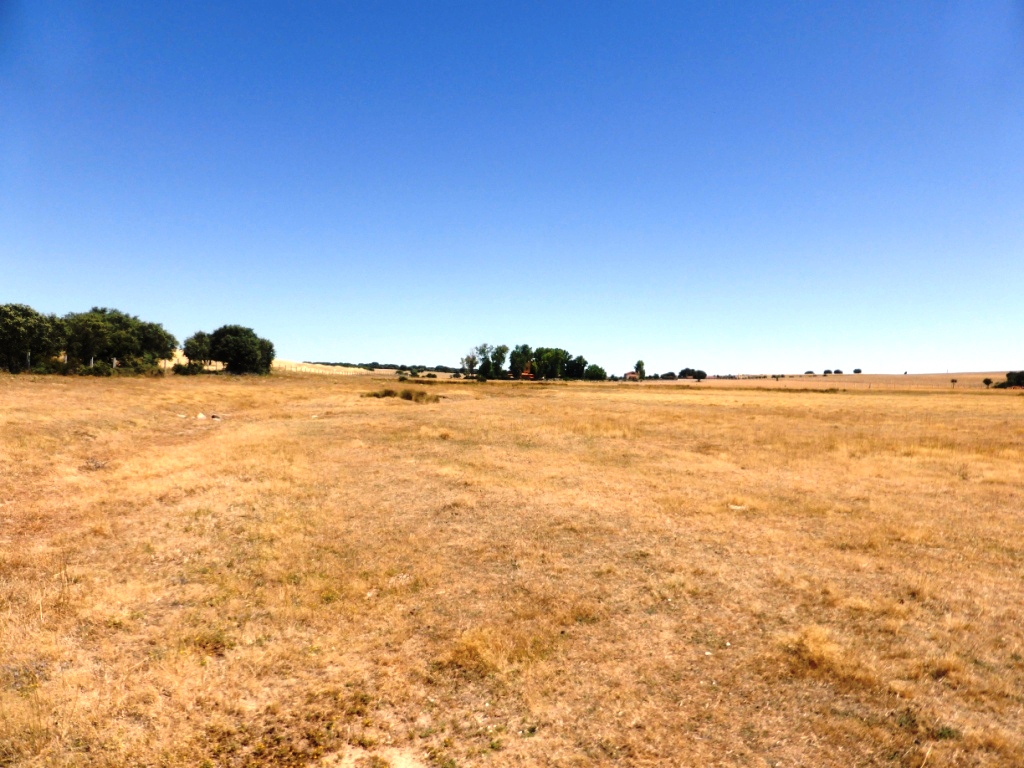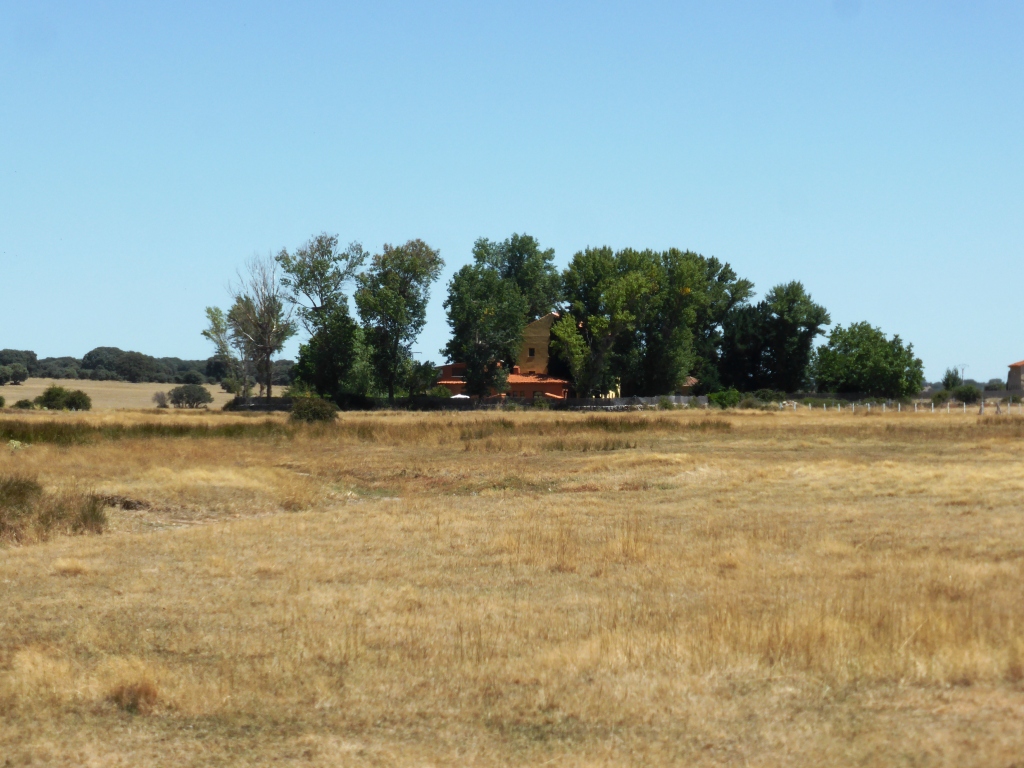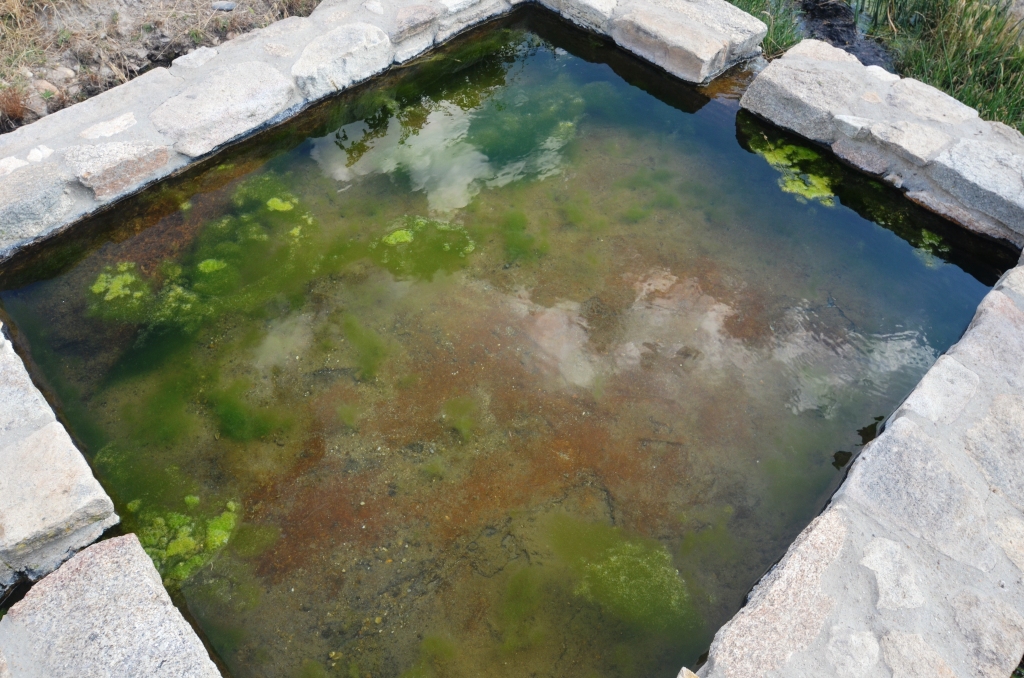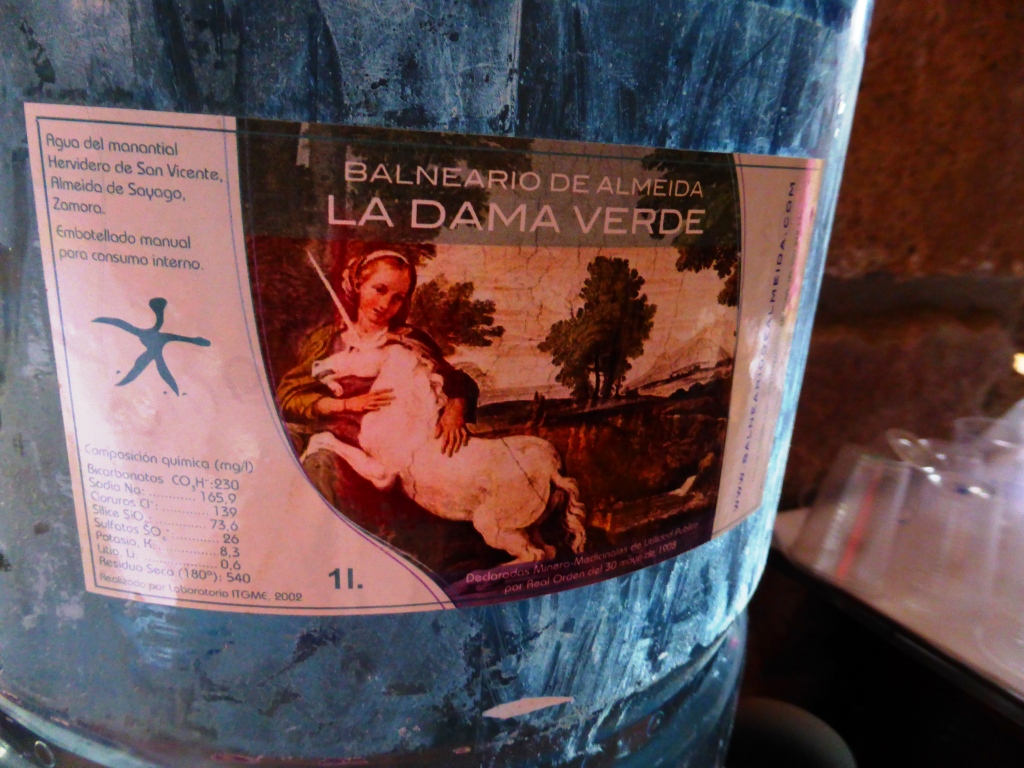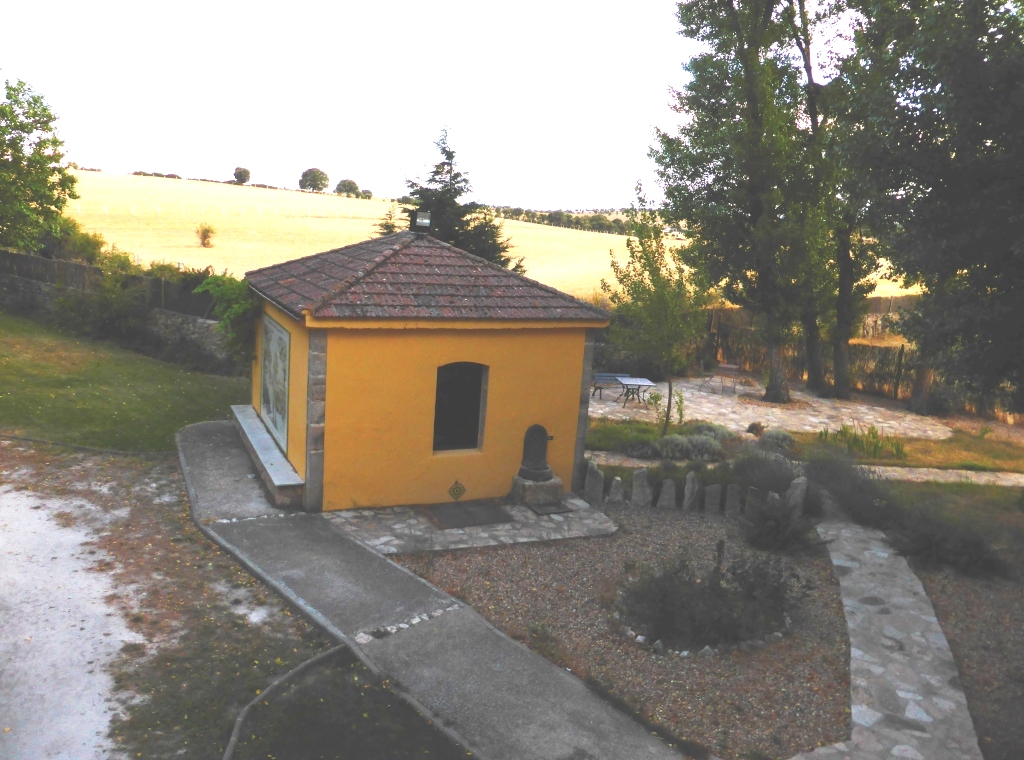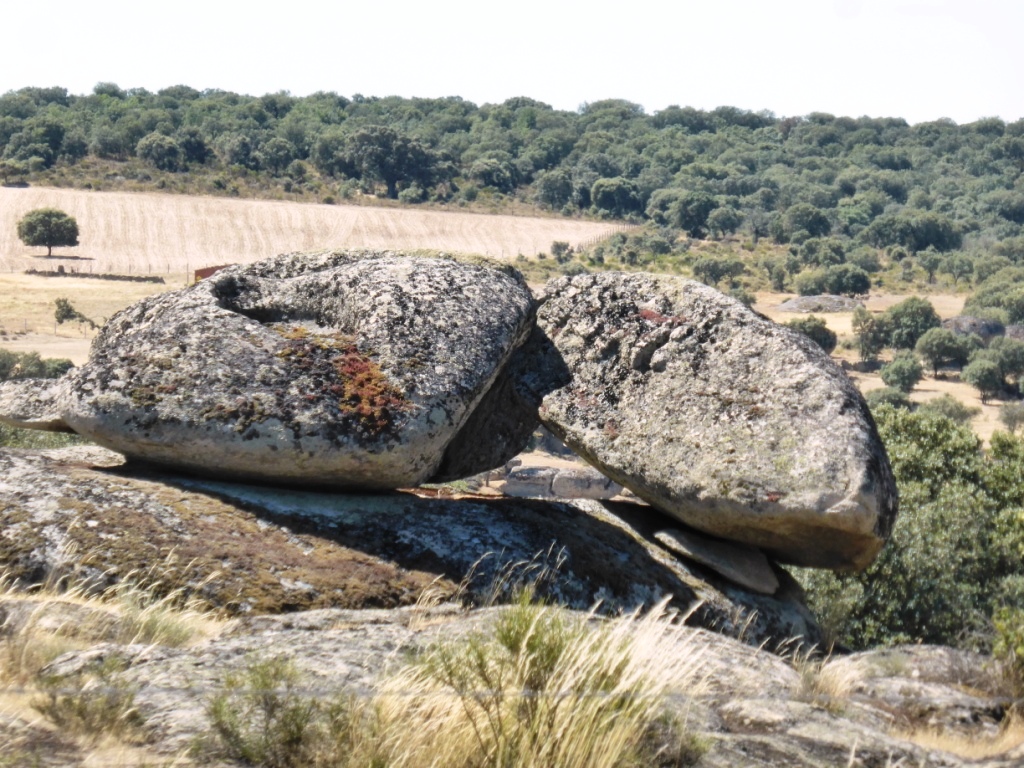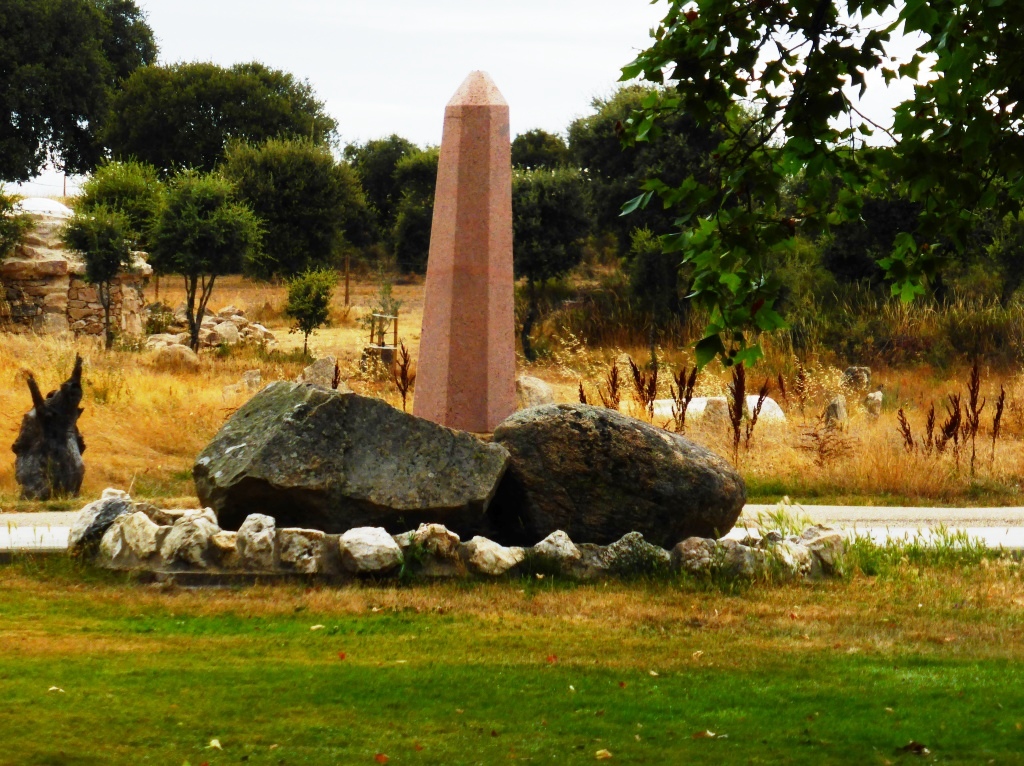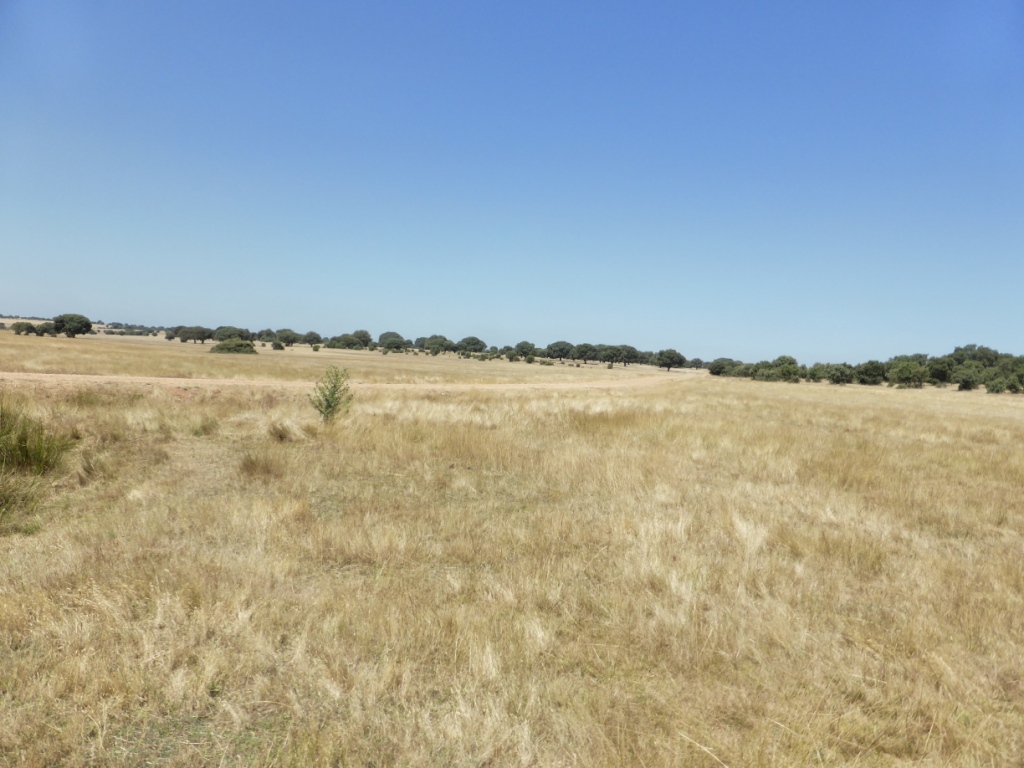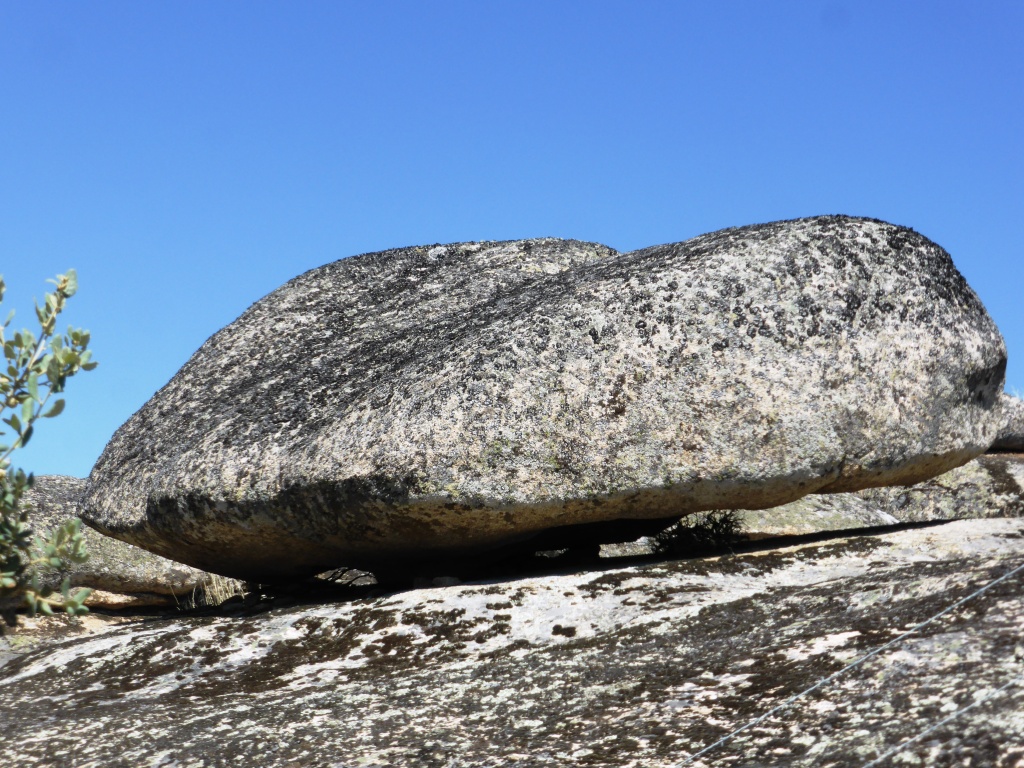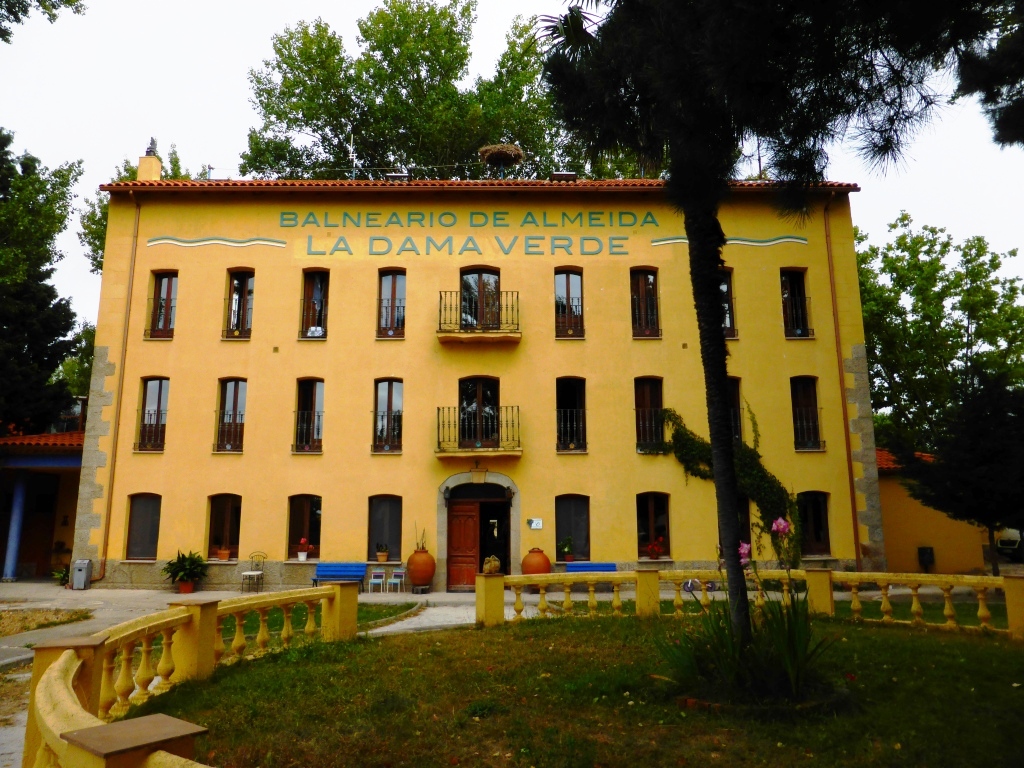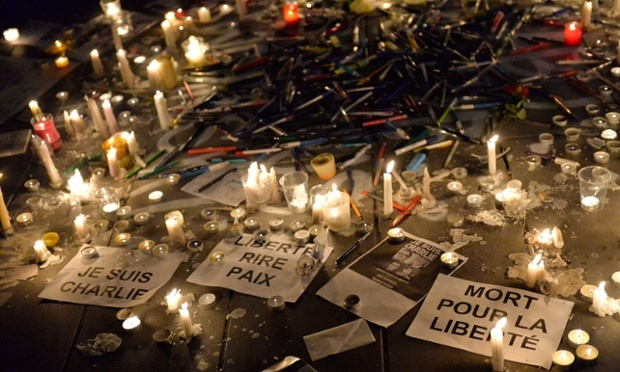
Paris, Charlie Hebdo terrorism protest.
The Camino de Santiago: the fruit of witnessing human goodness in a troubled world.
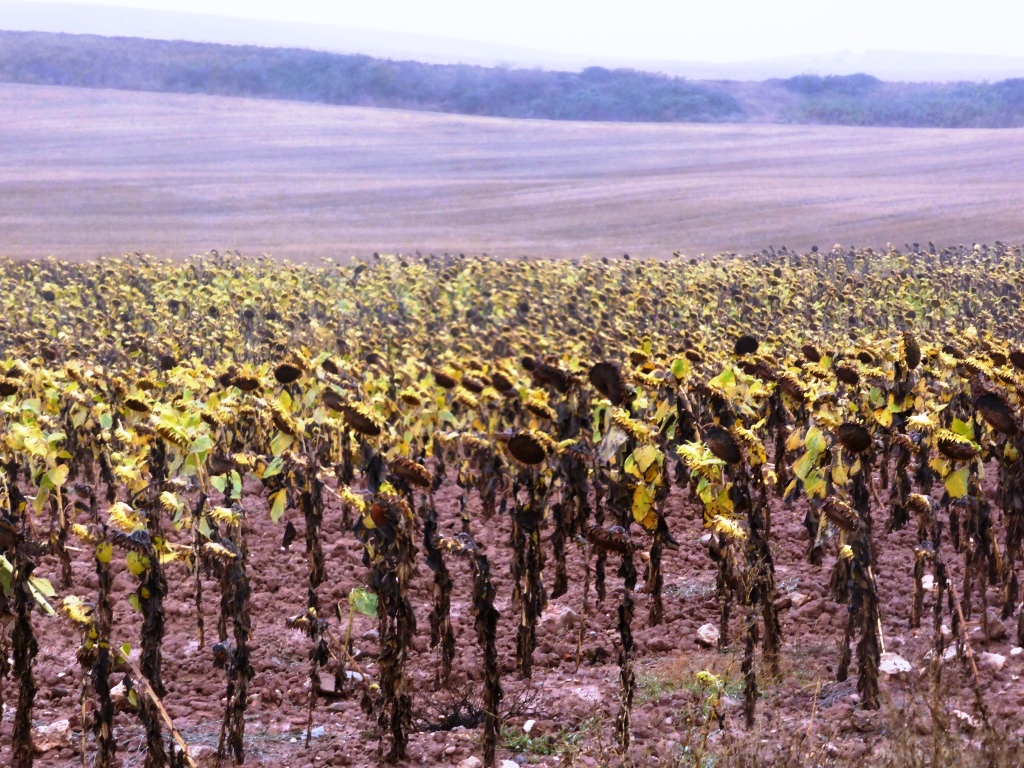
Sunflowers: caught in their dying and in their bearing fruit.
It is two months since I completed the Camino Francés, weary but deeply at peace. My heart, which had spent the summer tormenting me with tachycardia and dizziness, was again beating at a steady rhythm. The concerns which I had carried with me up to Roncevalles as autumn began had fallen away as I harvested a Camino replete with many fruits. Looking back on the uncomplicated days of simply walking and simple living, I recoil defensively at the world I find myself living in, today, the day after another dramatic terrorist attack which, understandably, has fuelled with indignation and sorrow nearly every one of us.
Fruits on the Camino.
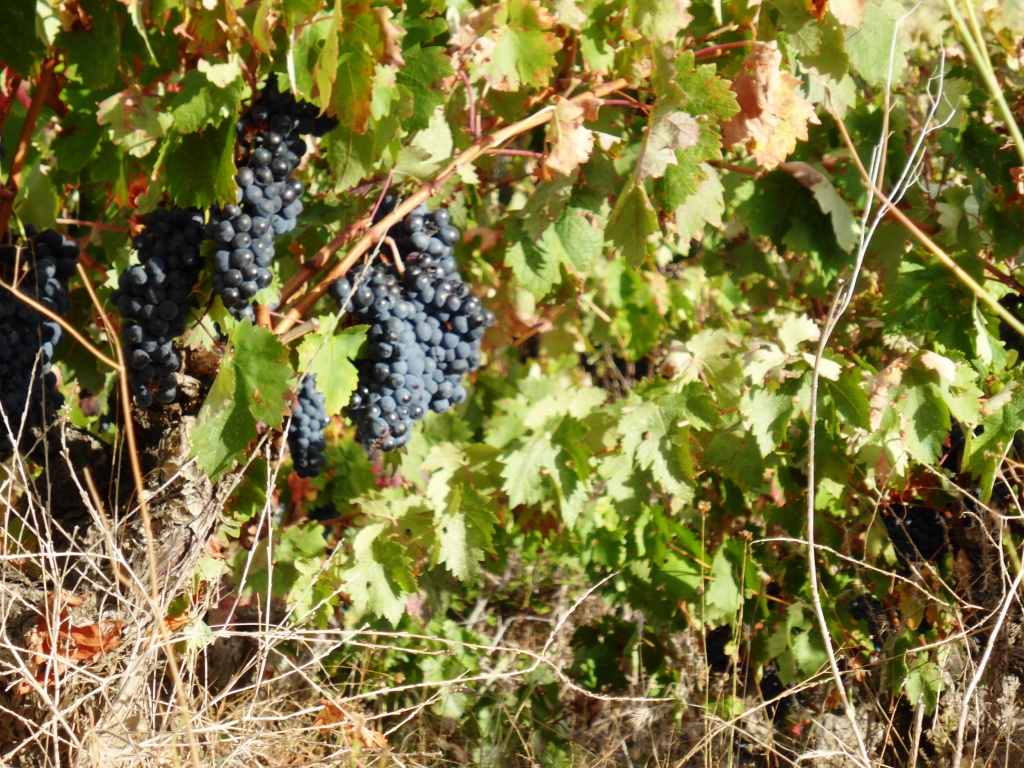
Rioja grapes, fuit of the vine, a source of joy: a symbol of blood.
Walking for five weeks on the Camino de Santiago without the internet or television I could catch only the barest snippets of news. This space and silence on the Camino allows life’s flavours to be tasted unmasked. Not all the fruits of the Camino are sweet: but they are raw and real and untreated. I returned over Christmas time to a home with a television where nothing on the screen appeared to be real. So in response to yesterday’s killings of the staff of Carlie Hebdo in Paris, and the policemen, I offer the fruits of my Camino and, maybe, you will see in these the Love and Hope and Goodness of humanity, “planted more deeply than all that is wrong”, as the Iona Community’s prayer of affirmation says.
The Membrillo
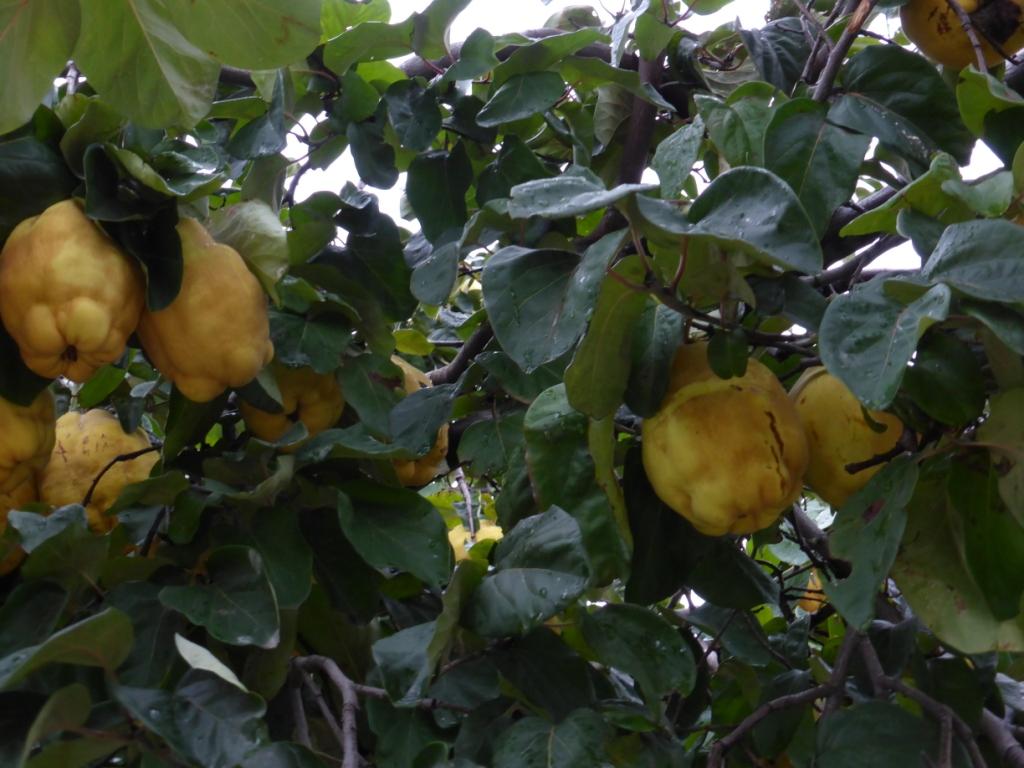
Looks like an apple but it will bruise you first if it drops on your head.
I saw some pilgrims trying to eat these on my way into Burgos. In English this is a quince and the fruits are large and hard and best eaten cooked. They can leave a bitter aftertaste, so most often sugar is added, as with the solid brown blocks of membrillo which the Spanish use as a jam or eat with the white soft (and fairly tasteless) cheese of Burgos.
Near Dubrovnik there is a tradition of planting a membrillo tree when a baby is born as a symbol of life, love and fertility. The fruit is rich in minerals and fibre which shows how good nourishment can come from the hard and the bitter. It is not an easy fruit to stick a label on, like “Muslim”, or “papist” or “Jew” or even “Chorizo”, a name which is pinned on politicians and bankers alike in today’s Spain. It reminds me a bit of my post on overcoming prejudice on the camino.
The Madroño
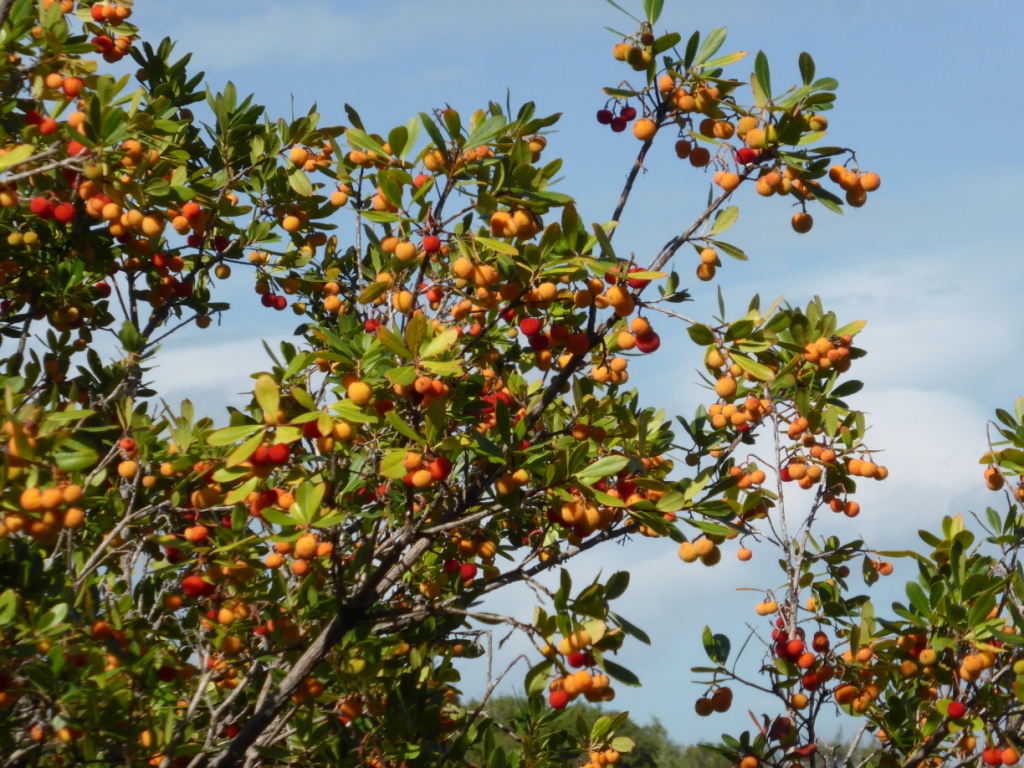
The Madroño or strawberry tree.
Some fruit is hard to stop eating once started. In my list are plumbs, raspberries, sweet oranges and cherries but certainly not the madroño. Its Latin name is arbutus unedo where the “unedo” is thought to signify “one only”. For most people one is quite sufficient although I’ve seen them sold in markets by the kilo, probably because they can make strong alcohol, often fermenting without either yeast or sugar added.
On the Camino de Invierno, however, where there are a few days of 30km or so without bars or shops, I was grateful to find the madroño abundant along many remote mountain paths and I didn’t limit myself just to one. This may have contributed to my heart’s return to a healthier pace since recent studies suggest the madroño can help with cardiovascular illnesses.
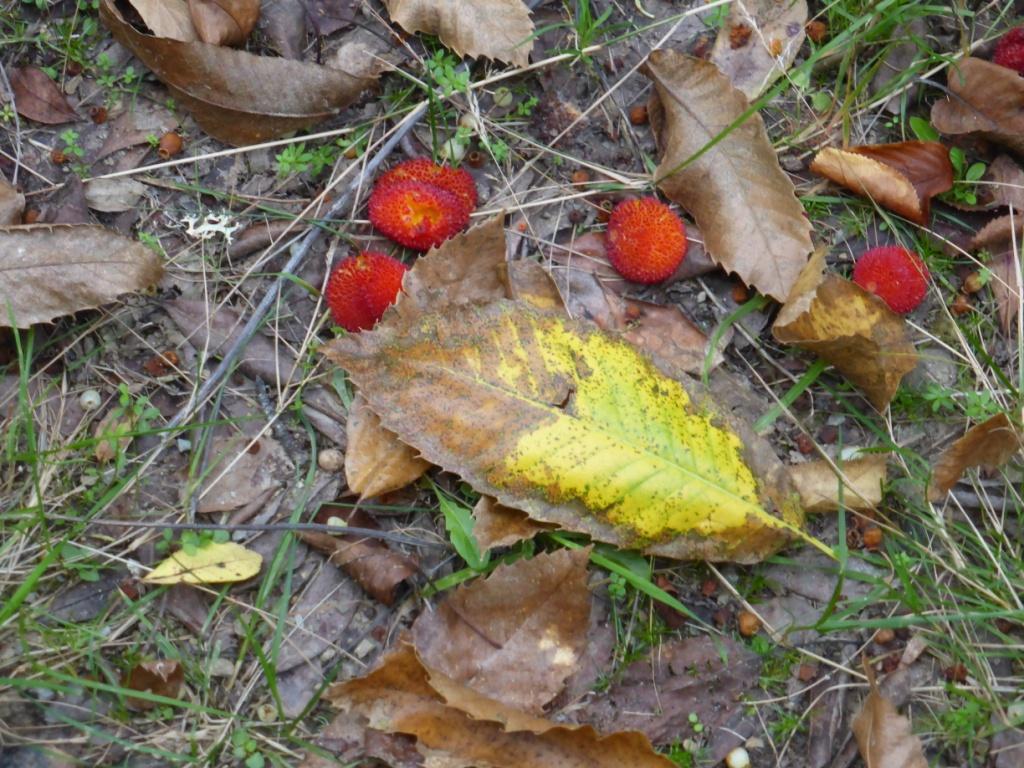
Wild boars get tipsy eating this fruit when it begins to ferment on the ground.
Raspberries
There are times in the Camino of the Soul when the spiritual highs of times earlier in the journey are as abundant as stars on an overcast night and so it was on this last camino for me. Yet there were some very special moments, always associated with the joy of meeting a stranger who was not a stranger at all, someone whom I had not met before but whom I have known all along. This recognition happens when we encounter the goodness and Love in another person and have the grace to touch the Absolute and Eternal in his/her heart.
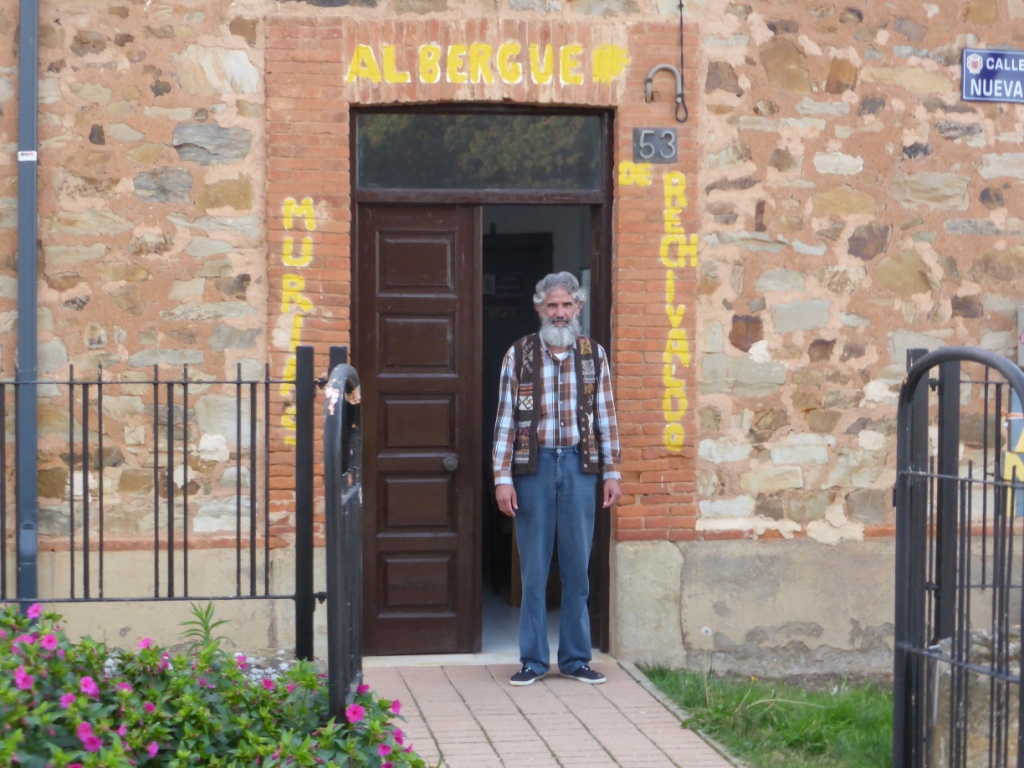
Pedro, hospitalero in Murias de Rechivaldo.
One such moment happened for me in the first village after Astorga is Murias de Rechivaldo which has three albergues. The old village school has become a “municipal” albergue run by Pedro. I was deeply touched by this man’s serenity and faith and his albergue is simple and spotless. He had also put some fruit out for pilgrims.
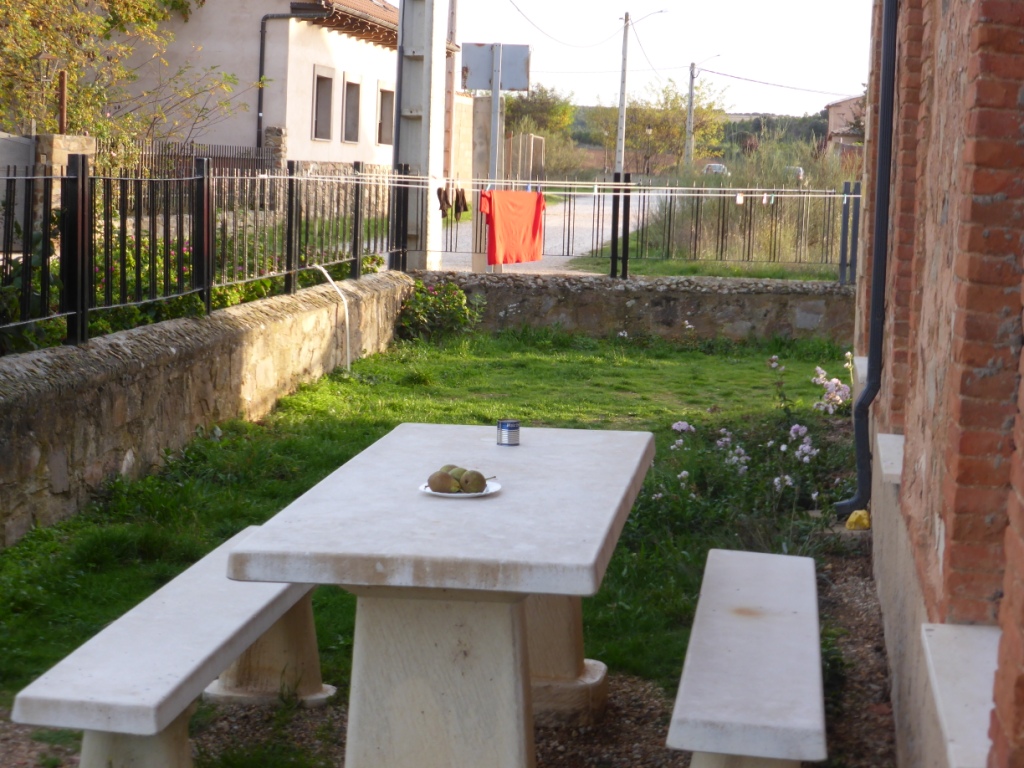
Pears left out by Pedro for passing pilgrims.
Pedro and I talked about love in a natural way which, in my experience, is unusual between males. Pedro spoke with tenderness and quietly, peacefully about matters of the heart: he prays throughout the day. Heavy stuff, you may think but I was filled with a deep joy which stayed with me for many days. Moments like this should have angels singinging the “Gloria”, but I had raspberries which is even better.
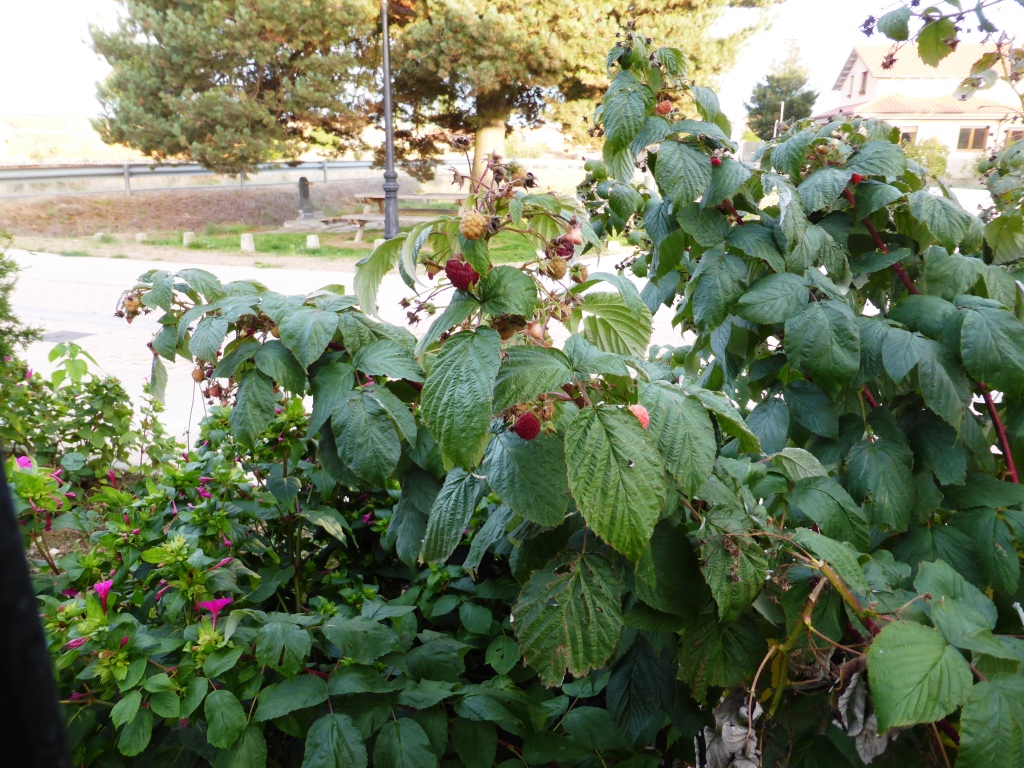
Provided by providence, Large, sensual raspberries at Pedro’s albergue in Murias de Rechivaldo.
Pale Green Apples
In the later part of my Camino when I had branched off on to the Camino de Invierno on which there are few places to pick up provisions on many long stretches. In the mountains there were madroños but it was in the villages which have lost their bars and shops, along with many inhabitants, that the real sustenance was to be found.
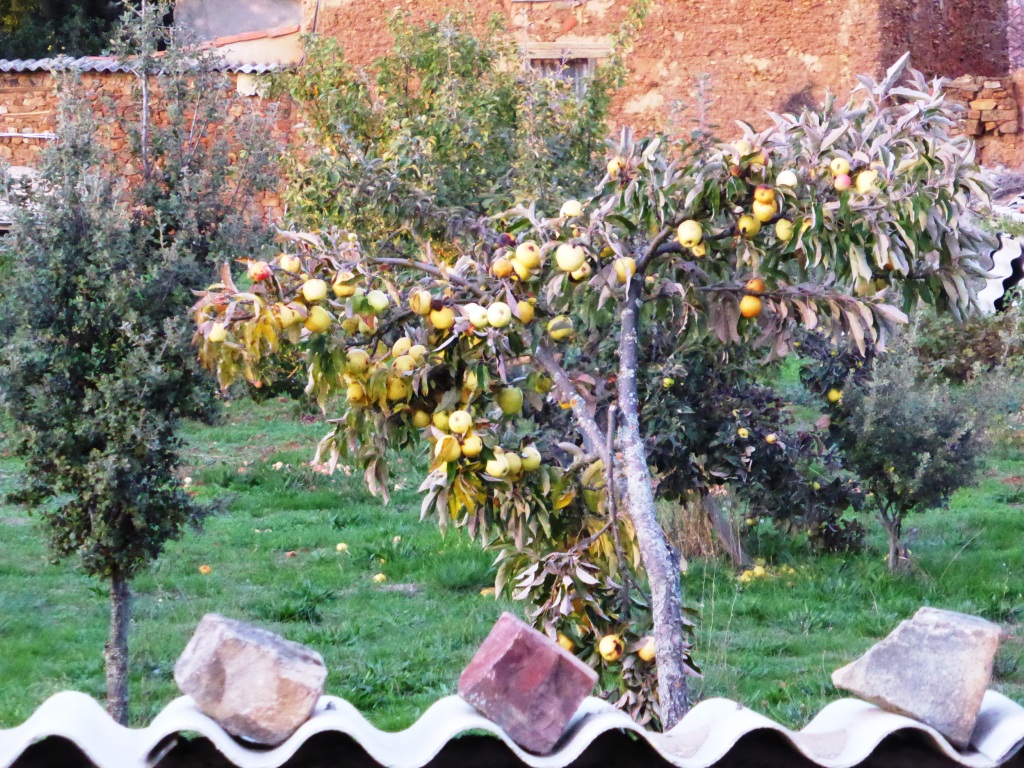
This tree was in a garden. Many, however, had dropped apples by the roadside.
Trees with pale green and yellow white apples were plentiful in Galicia where I gathered the windfalls from the roadside. Even perfect examples did not look very attractive but they were invariably delicious and satisfying especially those that had fallen from old, neglected trees. What sort of world do we live in where the cities sell fruit in supermarkets and the apples are all the same size and shiny; shiny red, shiny green and shiny pink ladies? One of the greatest mistakes of my elders was to present some form of shiny perfection as the goal of life, especially the Christian life when the real task is for each of us to taste the perfection we carry within us, within our imperfect skins. Bruised fruit is often sweeter.
Brambles
One of the mysteries of the Camino Francés in autumn is that ripe brambles can always be found even though they must be the most common fruit harvested by the hundreds of pilgrims who pass by each day. Moreover, the season seems to stretch out like the camino itself. Each day I thought that this was surely the last bramble harvesting day of the year only to catch sight of some glinting black berries on a bush where all others had withered into horrible little blobs of dried black-pudding. An English country sage once explained to me that this was because the devil had passed by and pissed on them overnight.
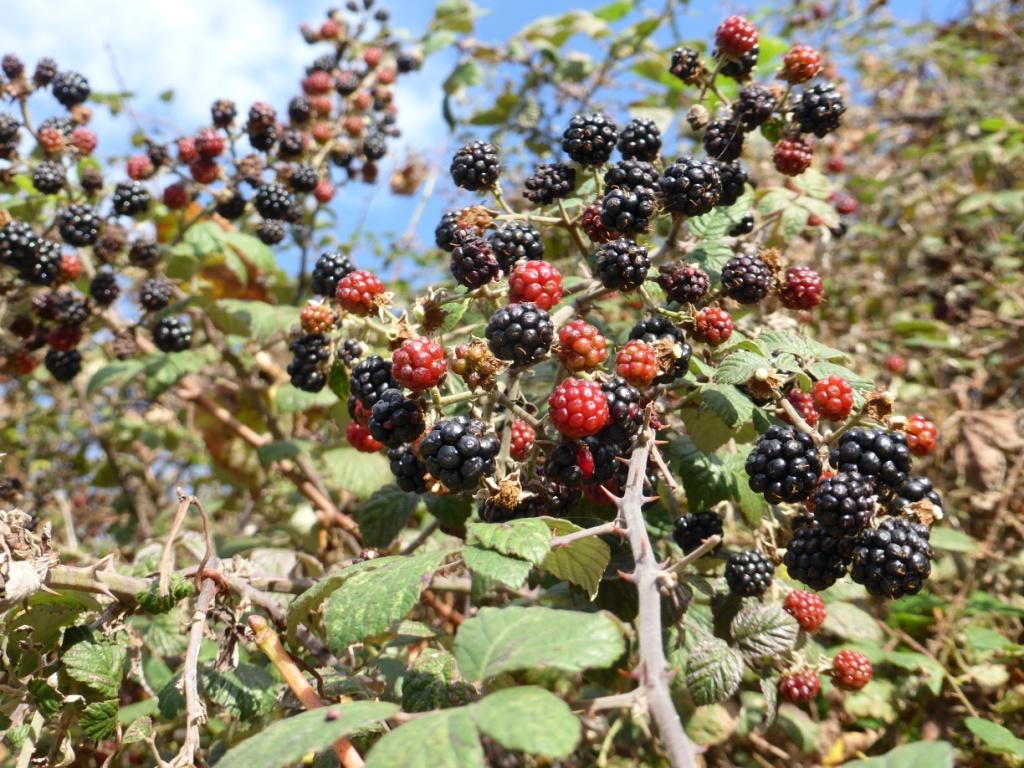
Even in November these berries awaited harvest in Galicia.
Chestnuts galore
The Camino de Invierno winds up through mountainsides of chestnut trees. As I walk in sandals this is a hazzard, with spikes suddenly attacking an exposed flank of foot where the finer, cactus-like needles stick, penetrating further into flesh with every step.

The castaña has fine needles to protect it.
Castañas carpet the camino and so do almonds, often in the same spot. Both are edible raw, as are some bellota, the acorn from the encina, a Spanish oak which is sprinkled lavishly on many landscapes. Most bellota are bitter but can be dried and ground into flour to make a bread which preserves well.
Fruit: energy concentrated to transform.
From the Camino the world seems benign and bountiful. Nature appears to be productive and safe even in accident and death. Life is in abundance alongside decay and rotting: wheat and tares together. And winter itself bears fruit.
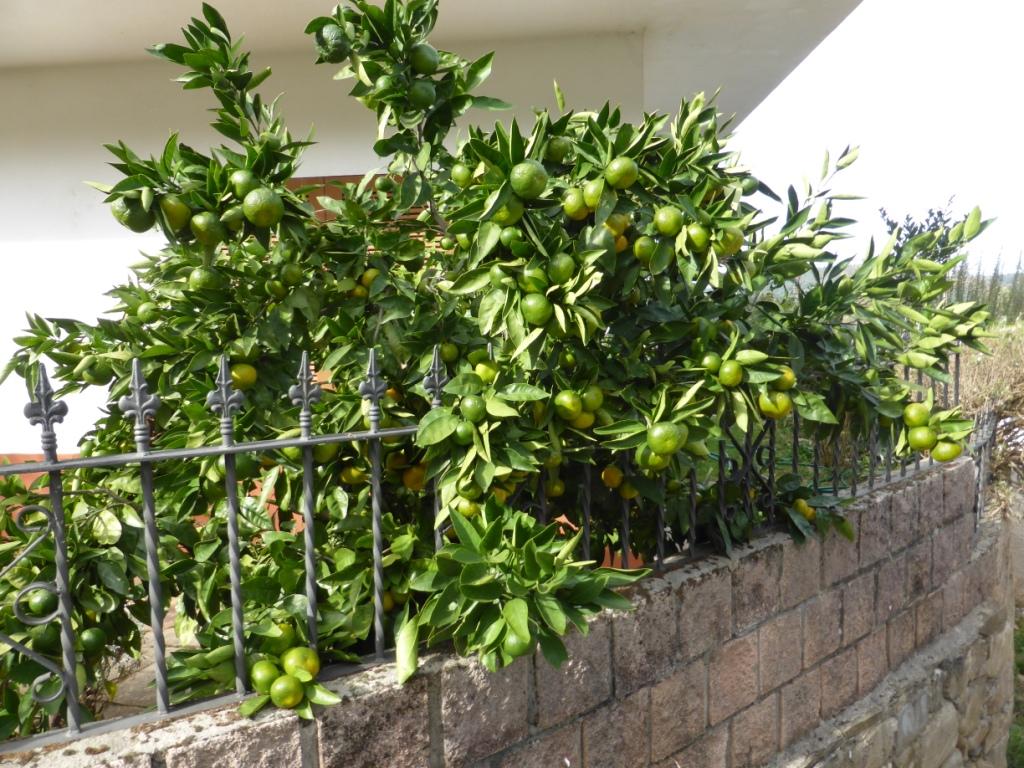
Oranges, a winter fruit.
Human goodness is abundant, too. Pedro apart, I have written of fruit not people. I could have mentioned other individuals I met on the Camino like Frank, or Sam, or John, or Tom and Larissa, or Colleen, or Etelvino and many more who, like the fruit, gave me energy, encouraged me to keep going and shared of themselves, vulnerable like fallen, bruised fruit, as we really are. Slowly we are thus transformed.
A younger blogger posted on the Theology of Coffee a few days ago in the blog God in all Things. Her piece has stuck with me as peace can. Maybe it urged me to suggest this Theology of Fruit, in a troubled world, as always, forgetful of the harvests of silence.

